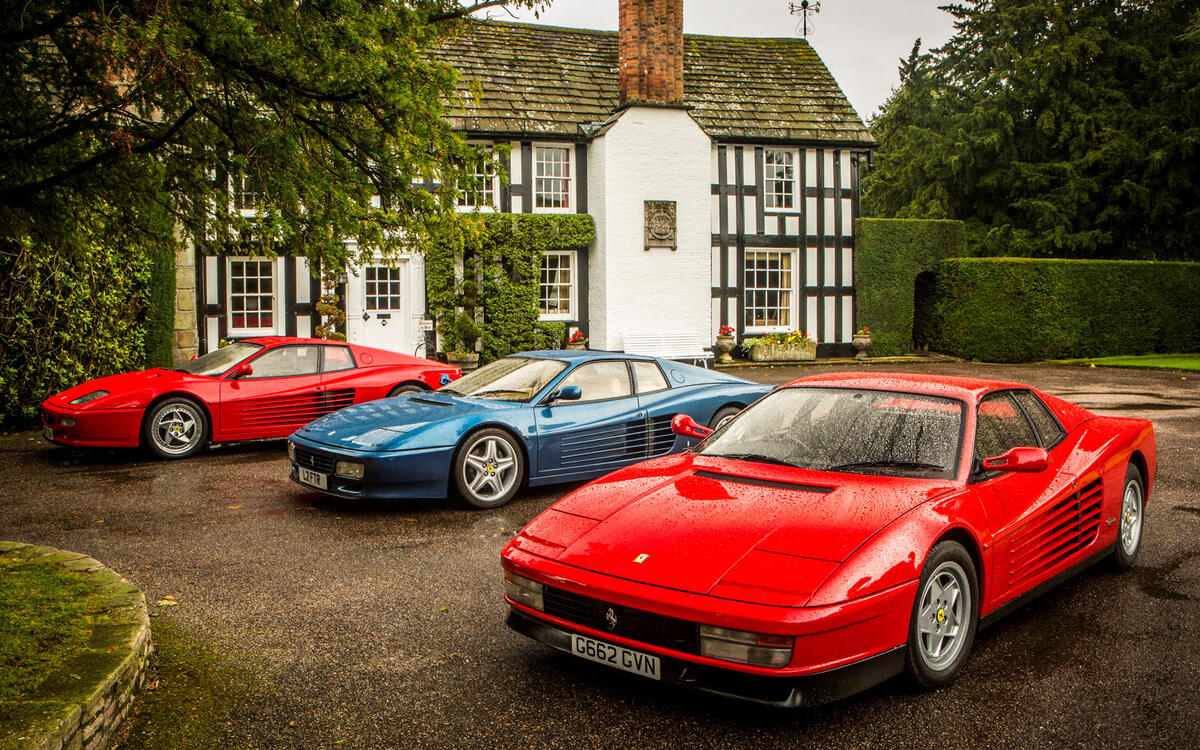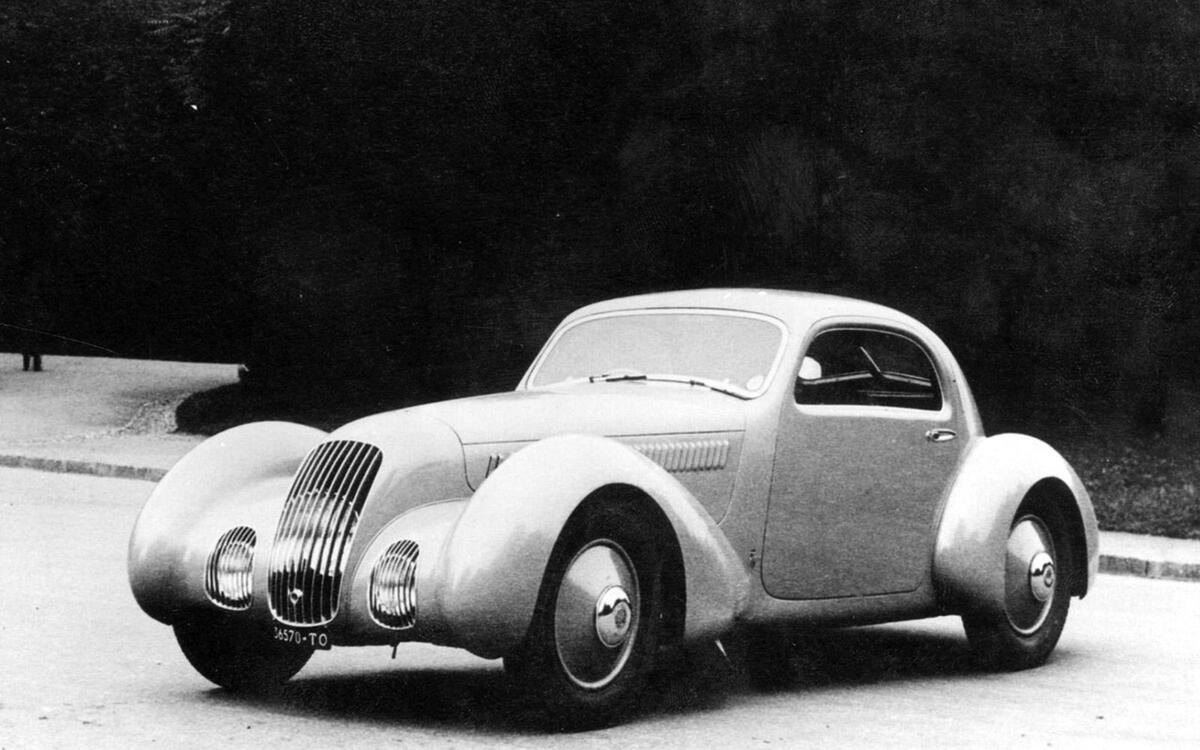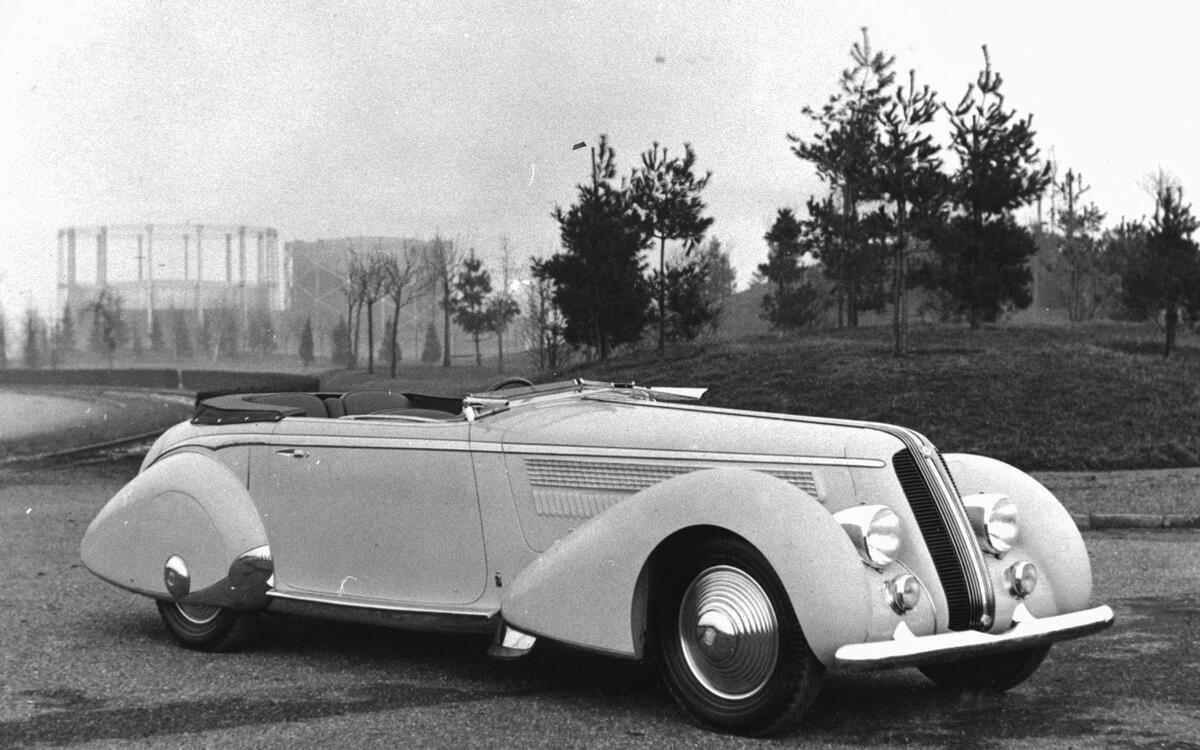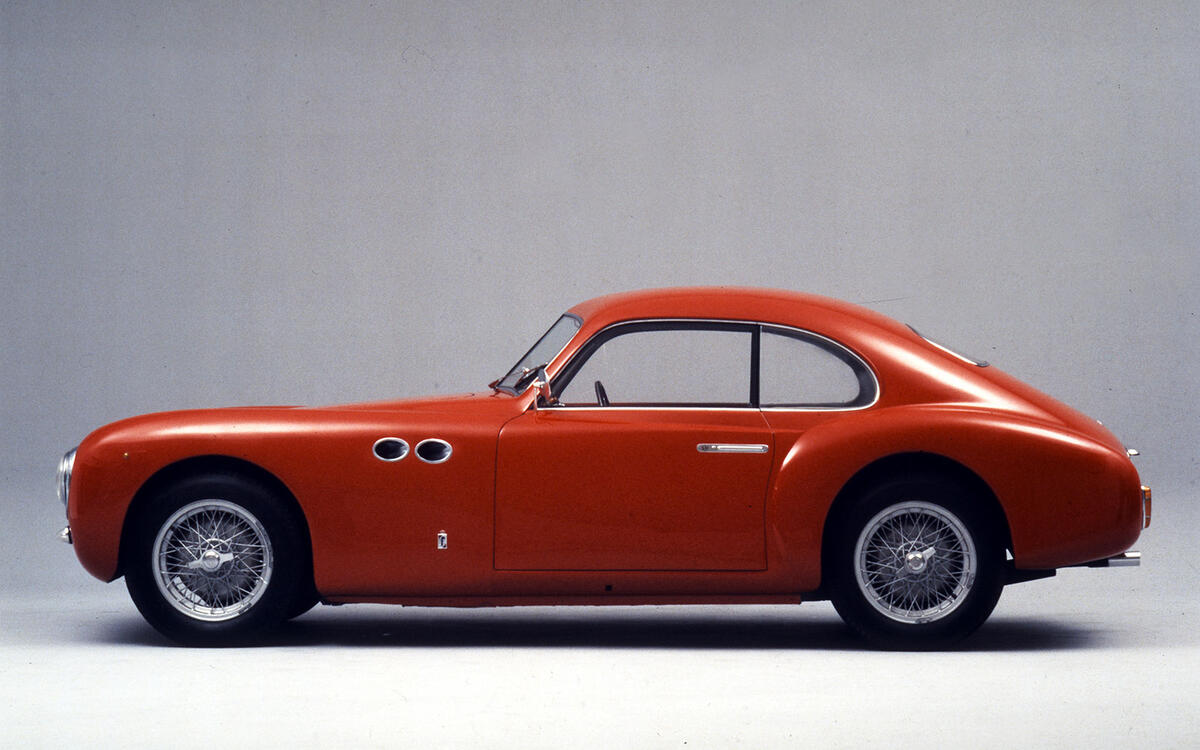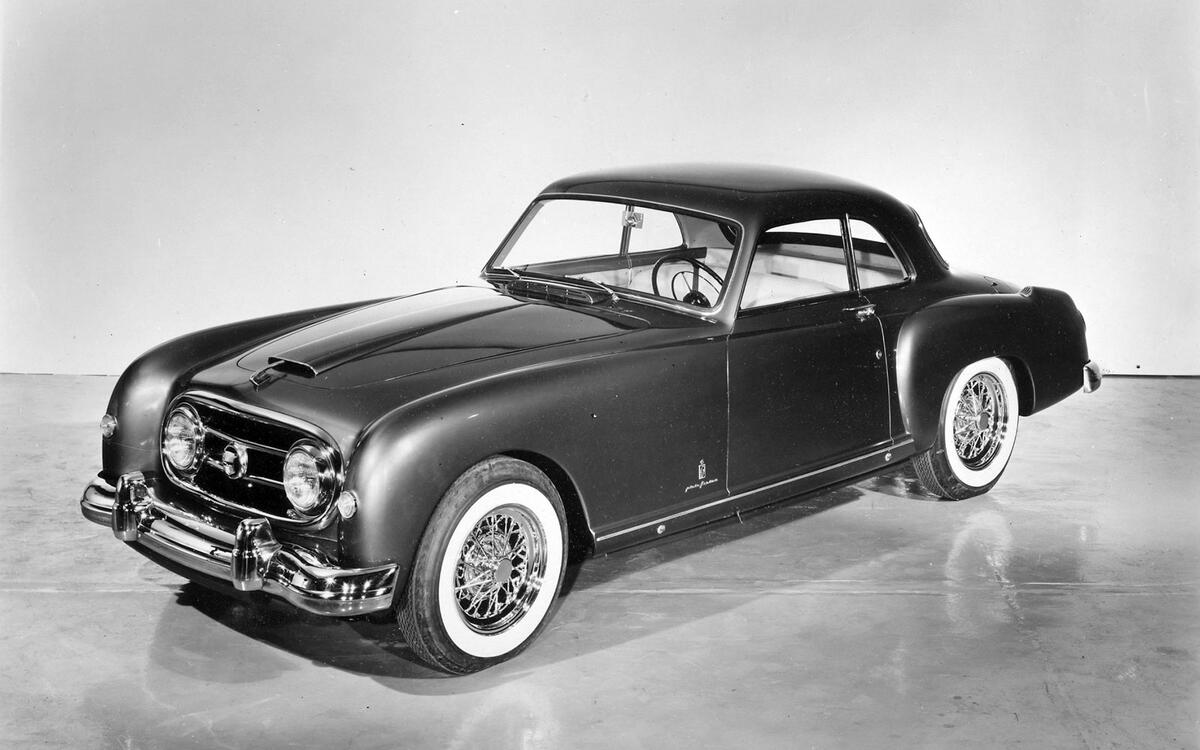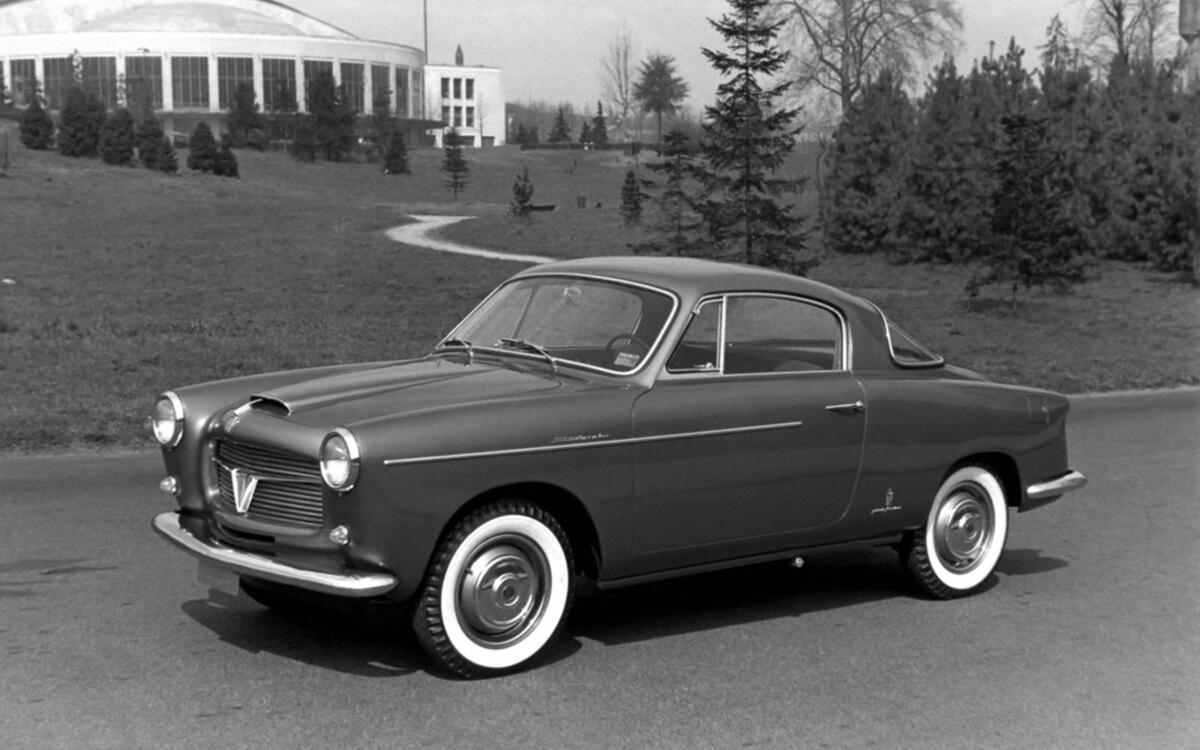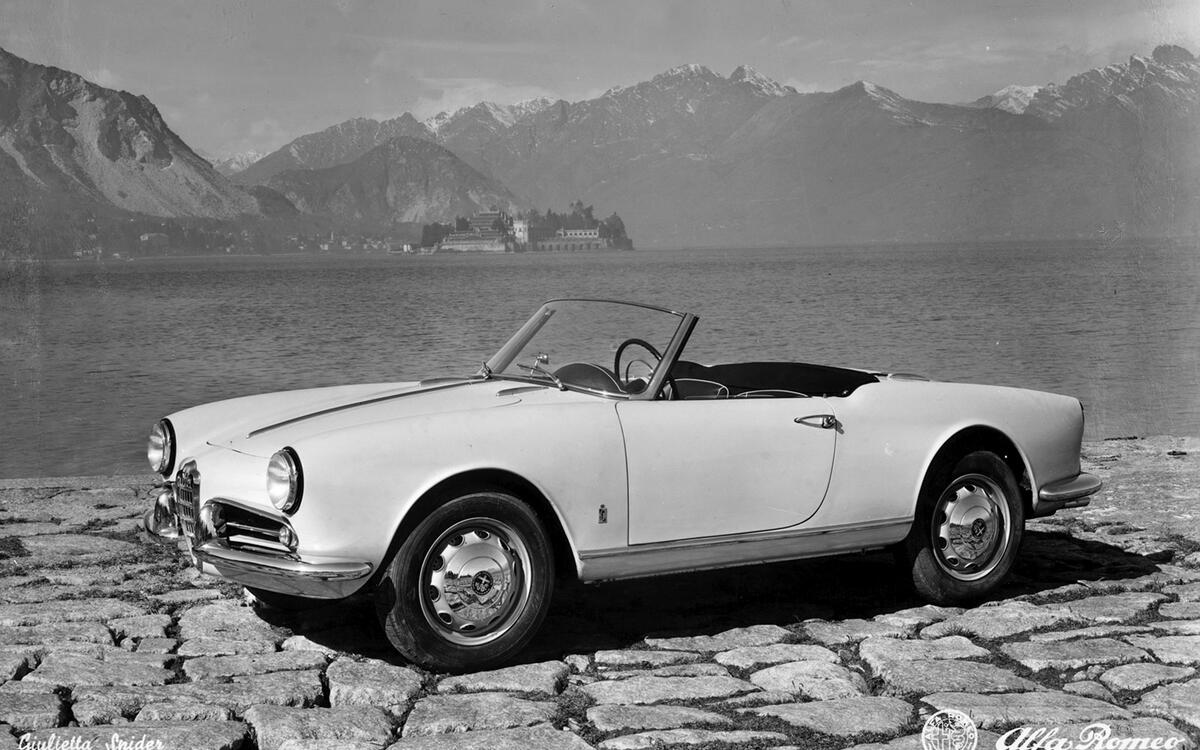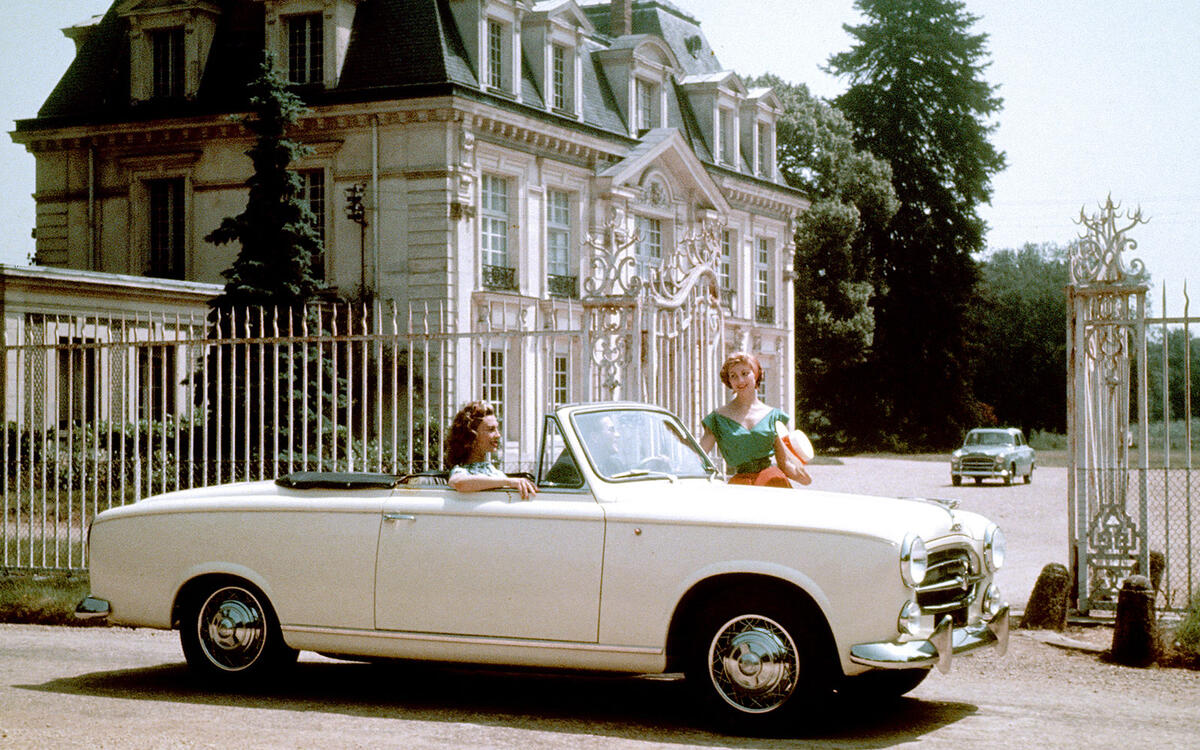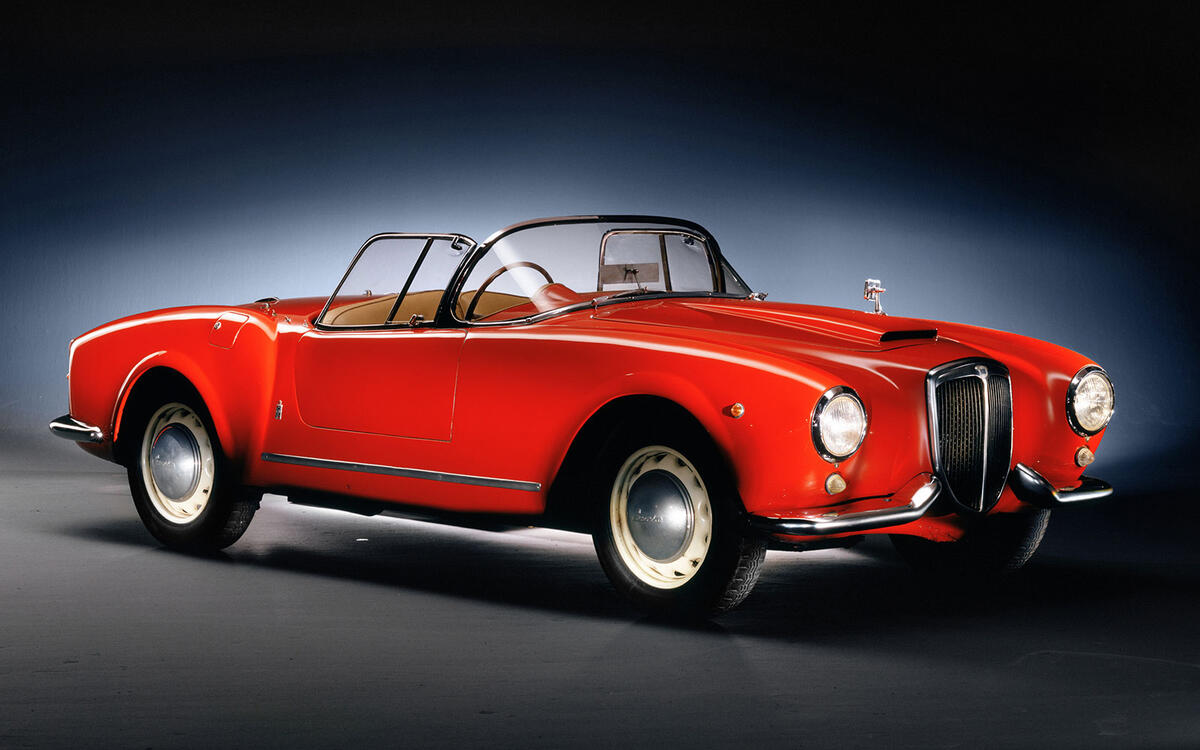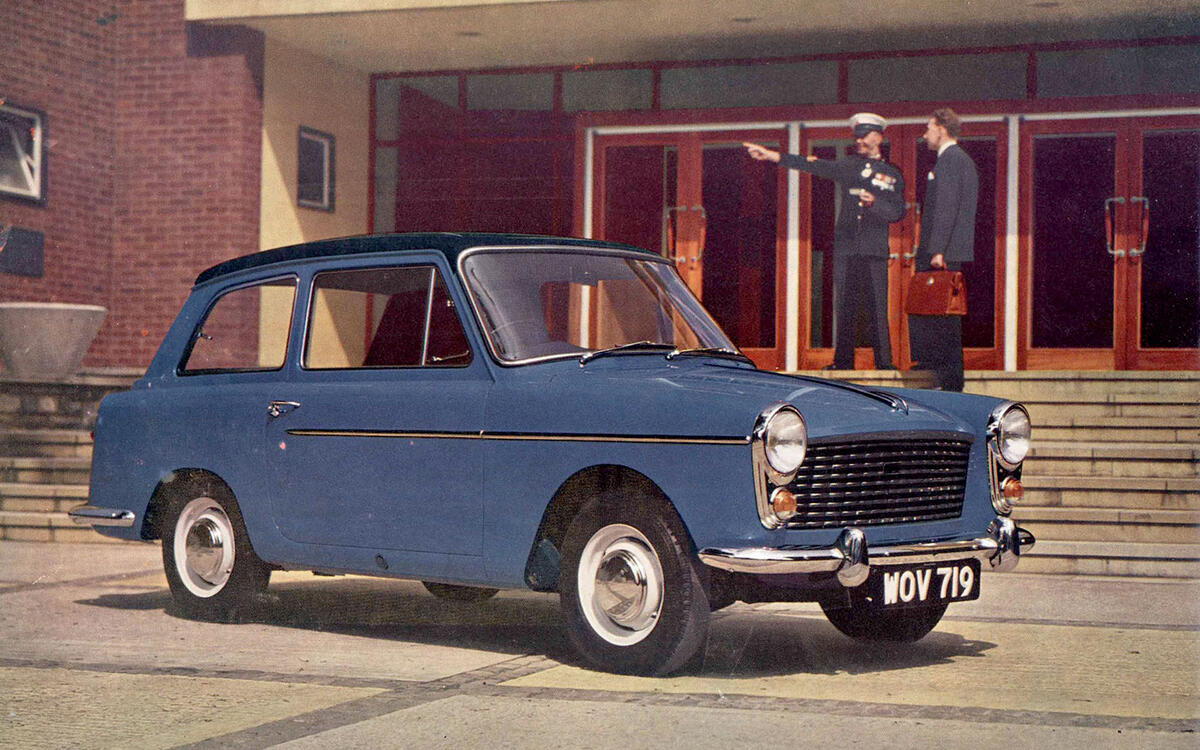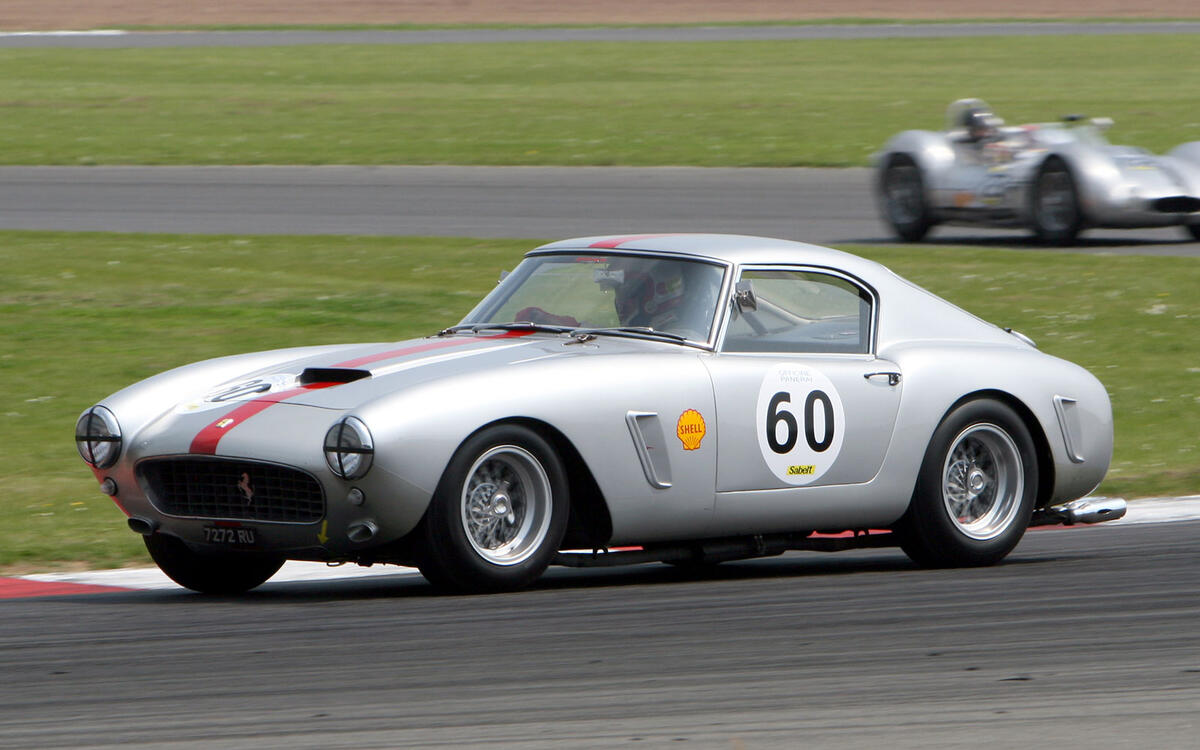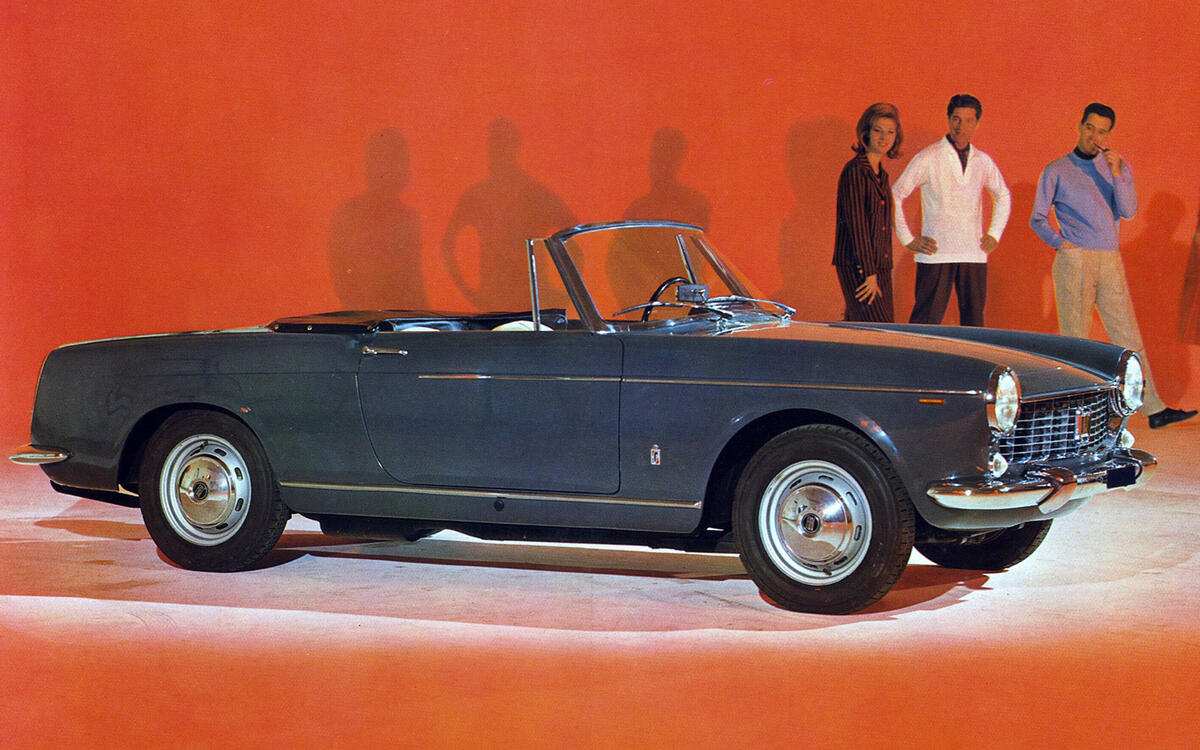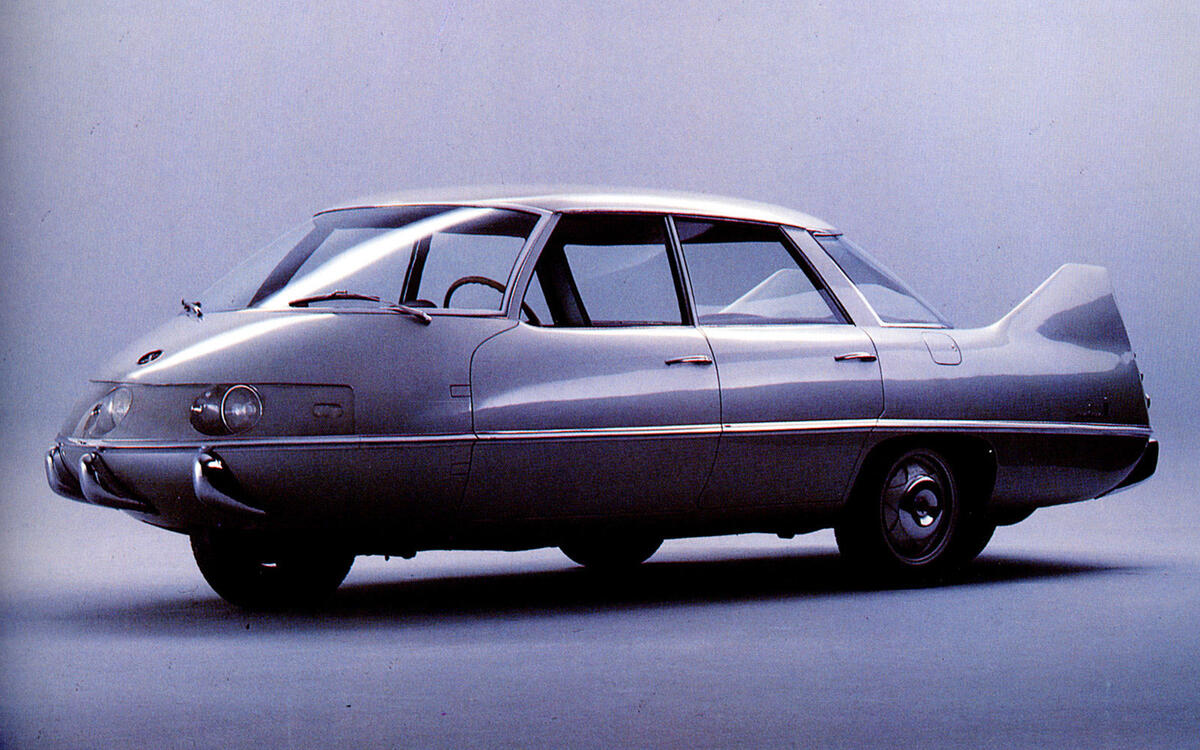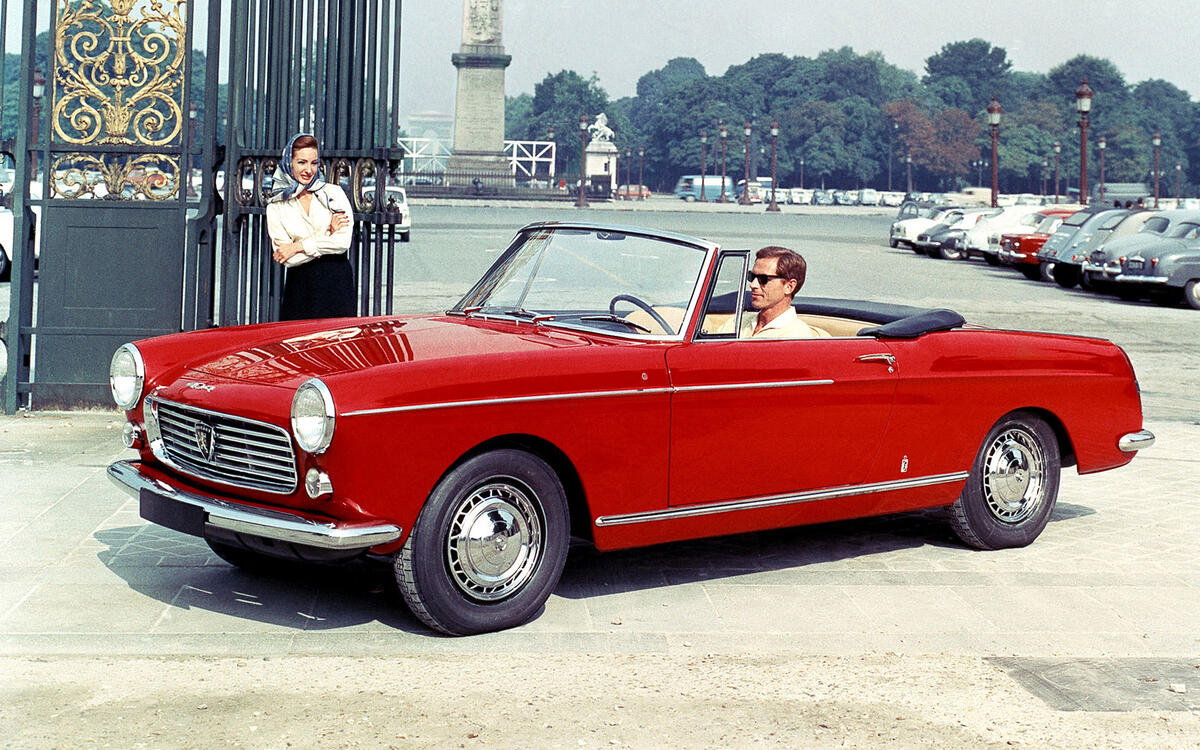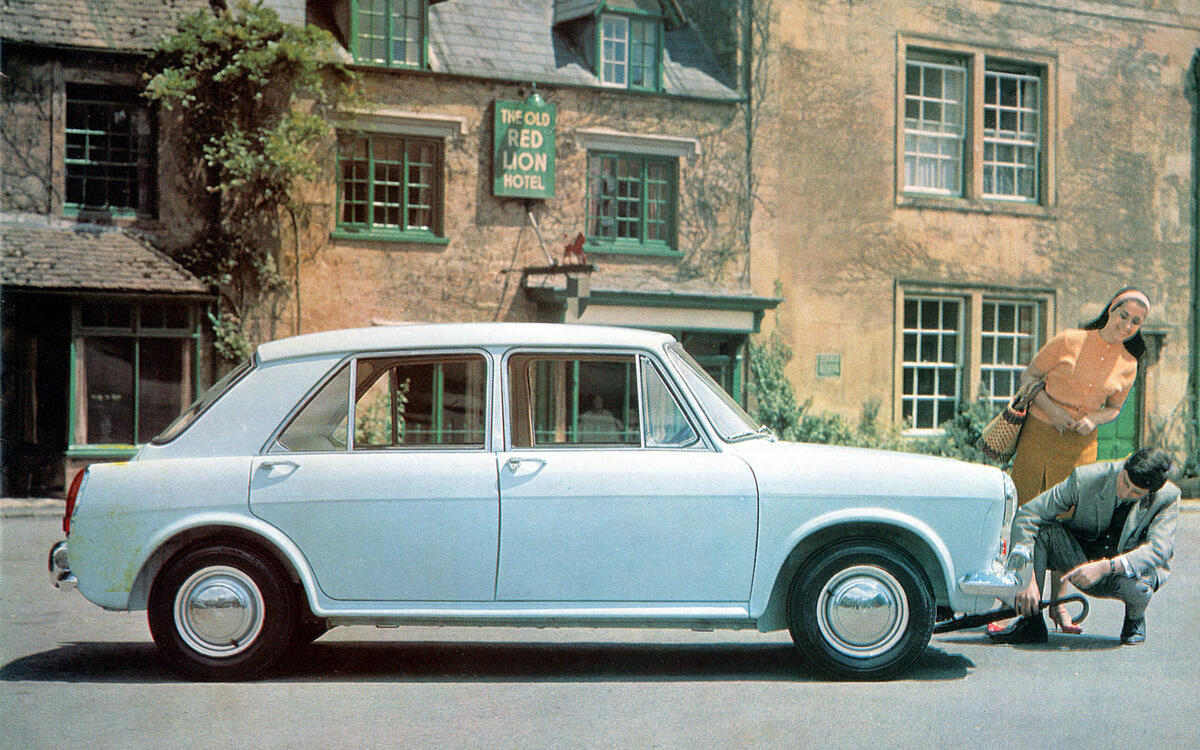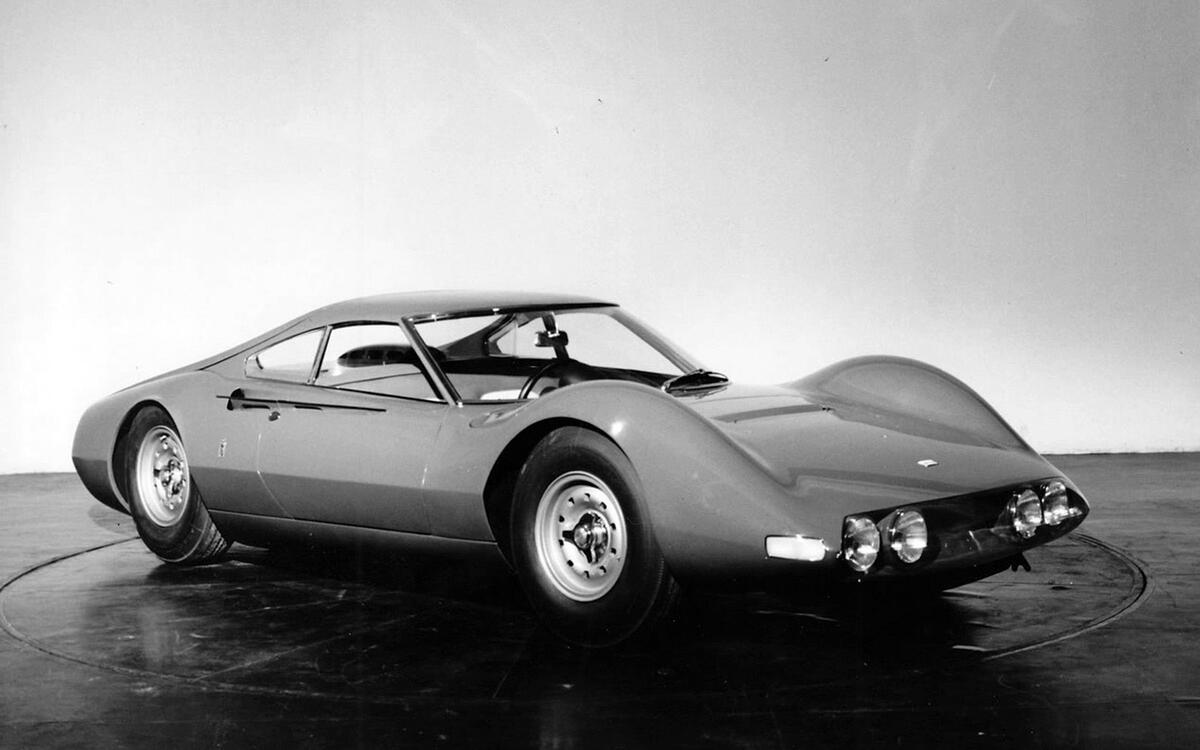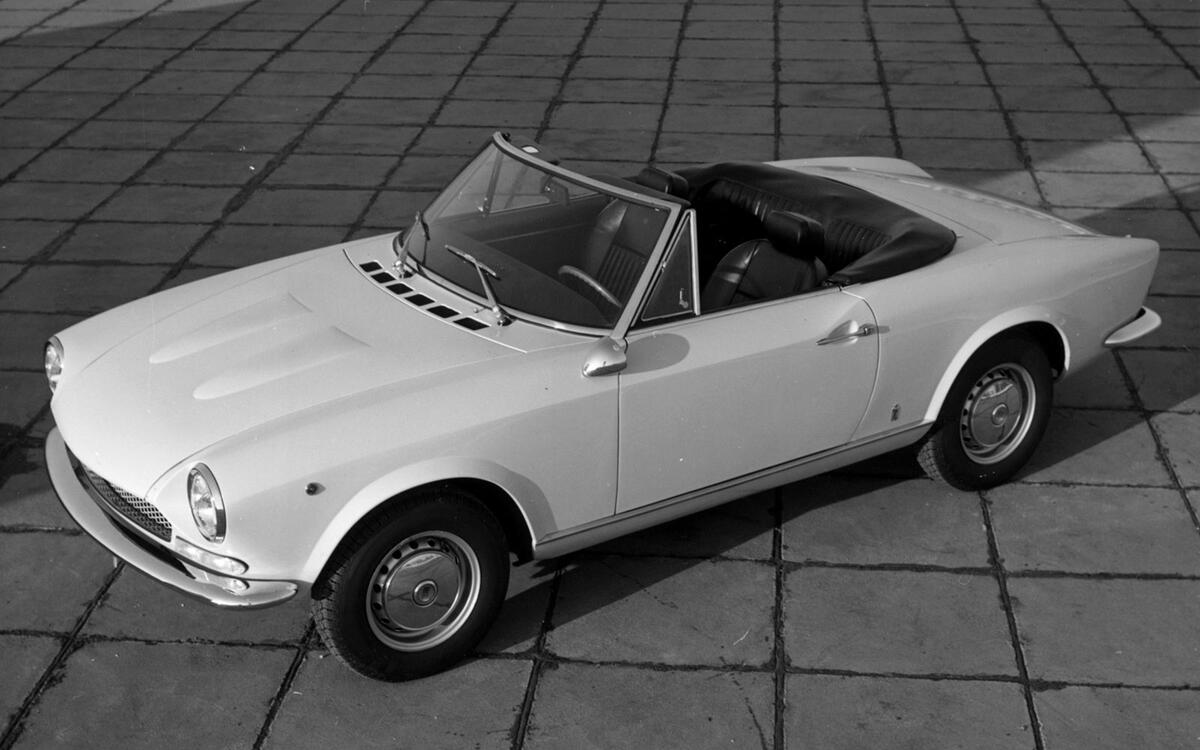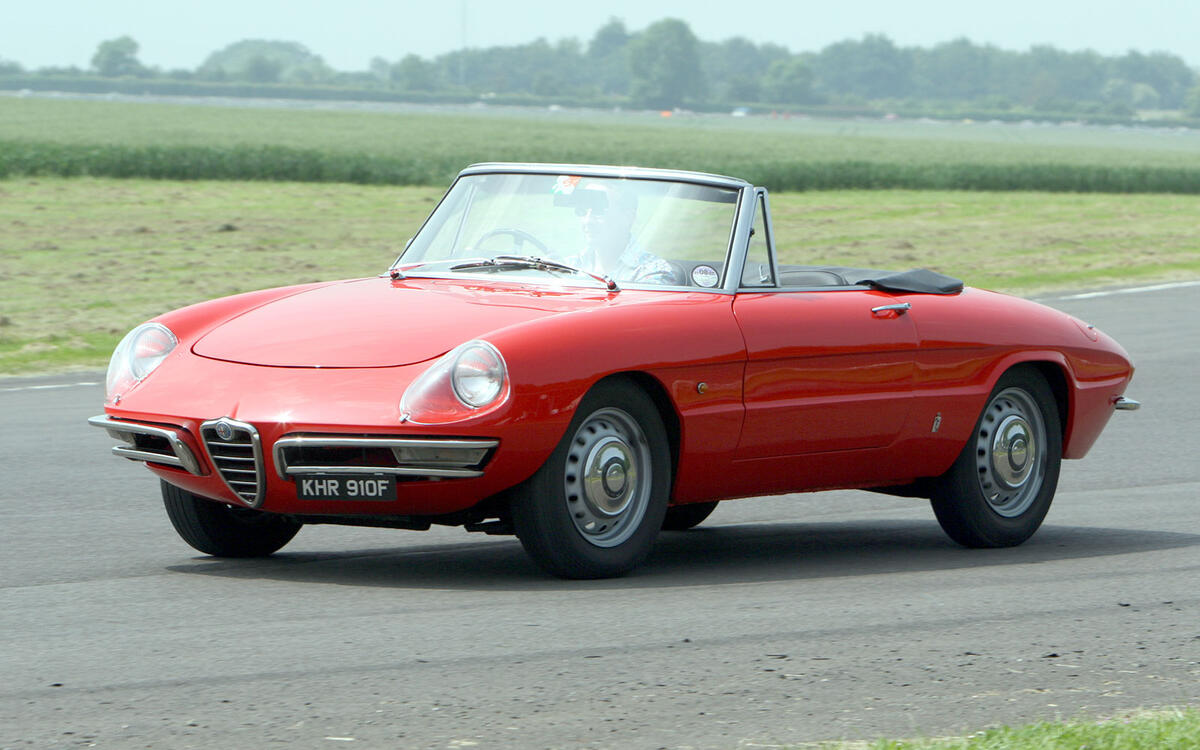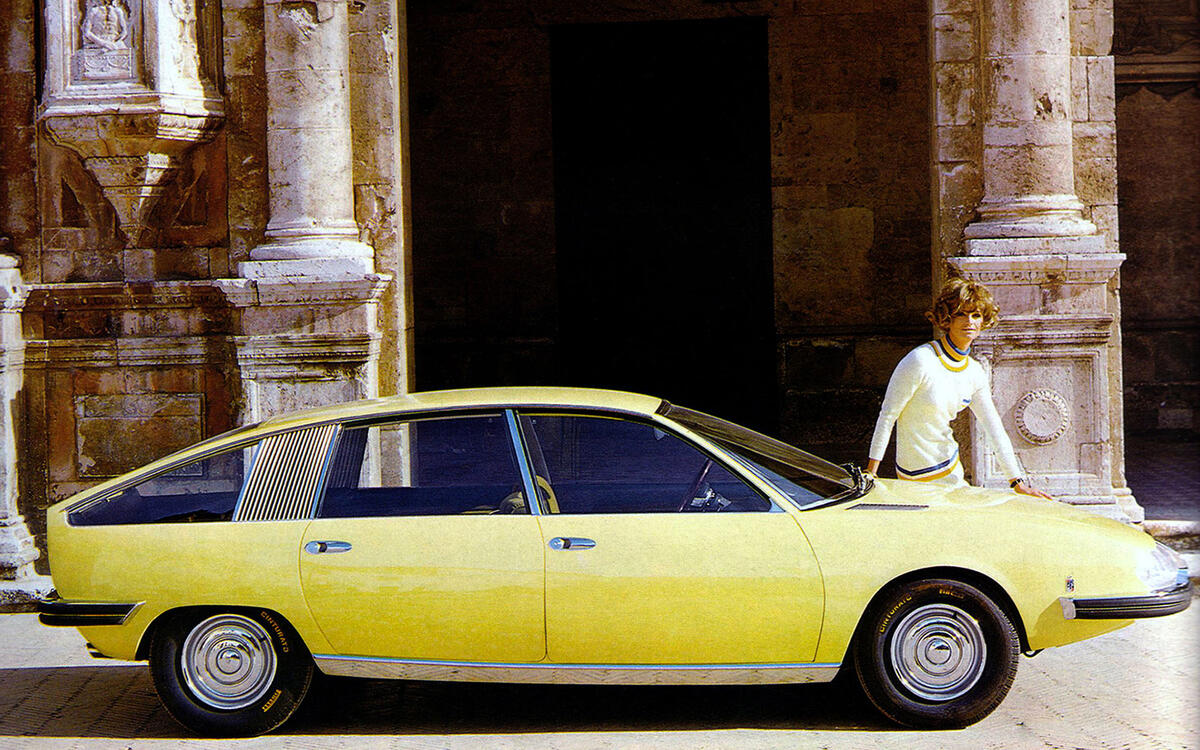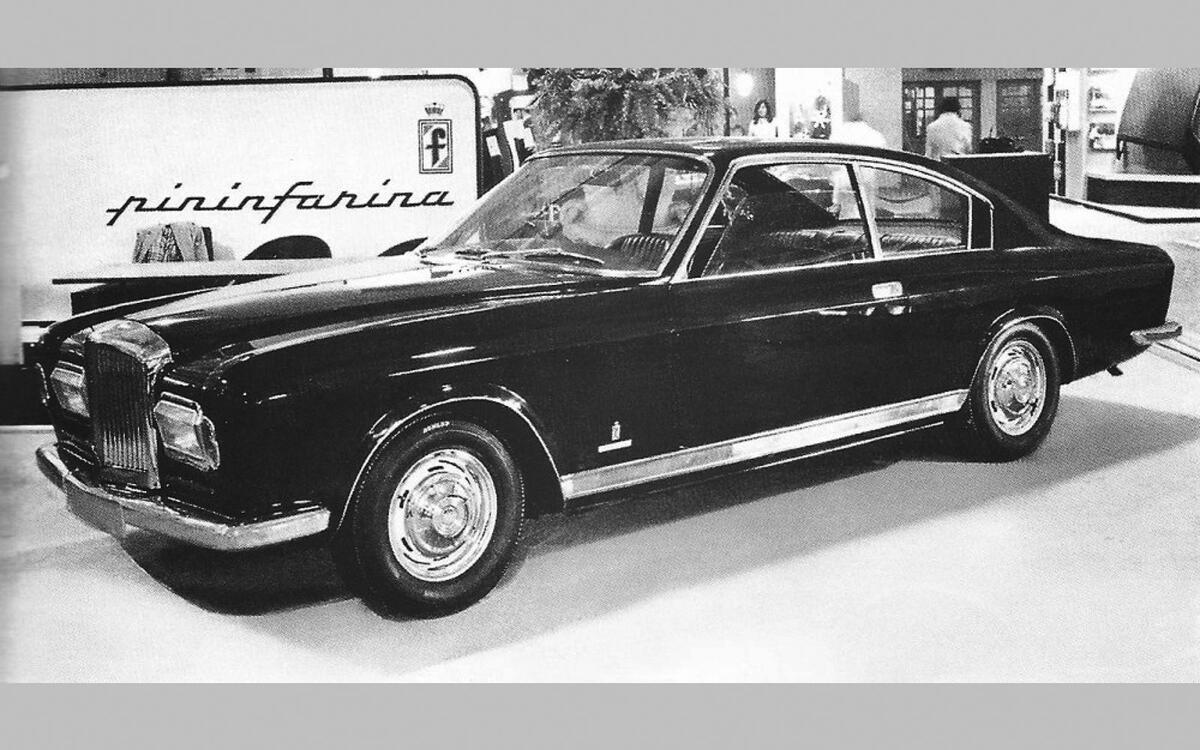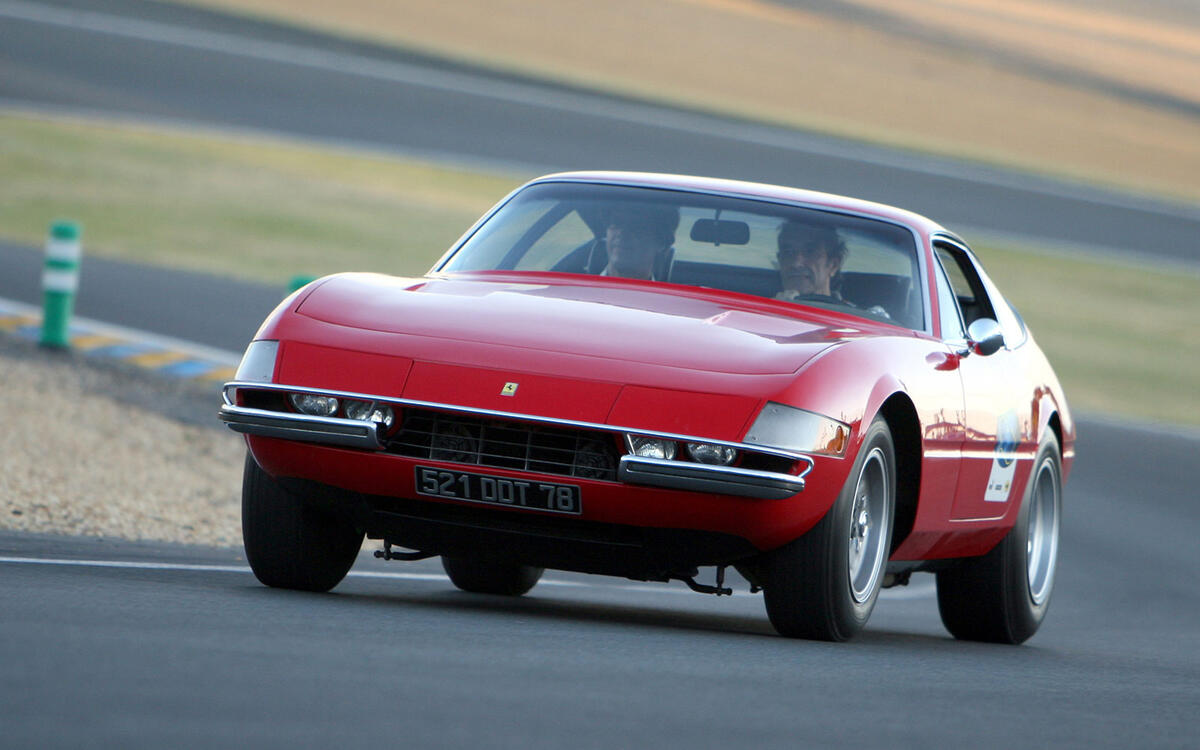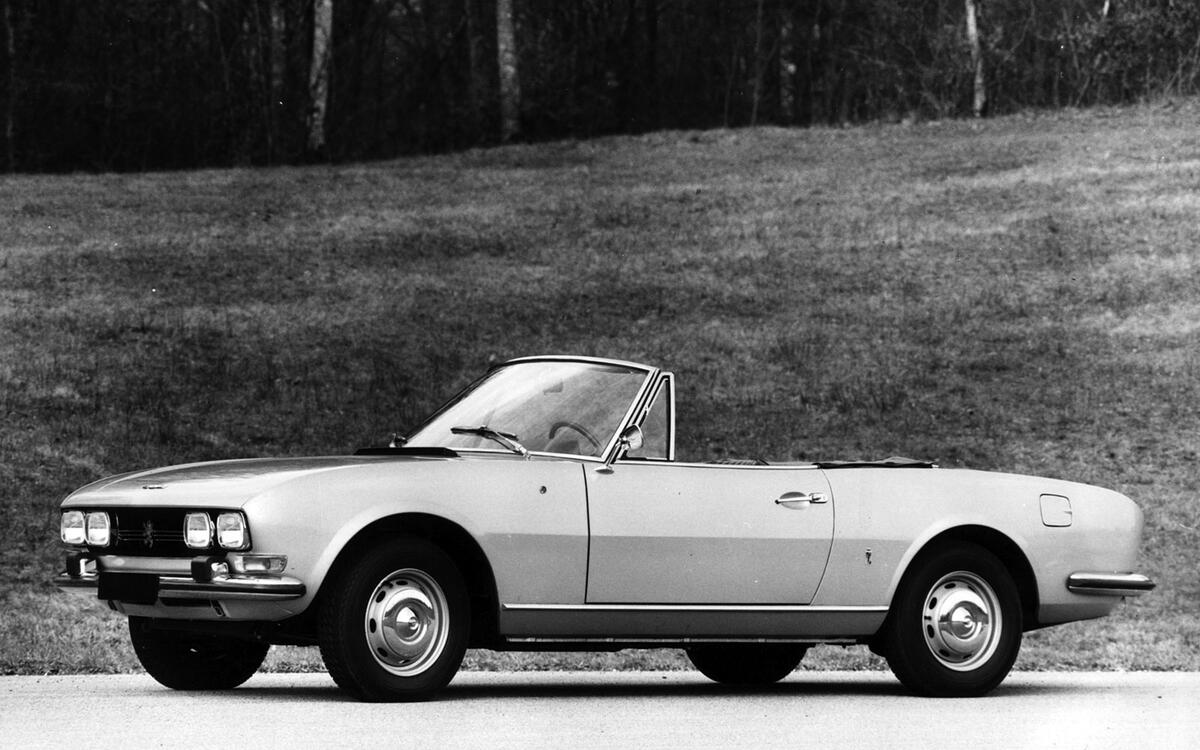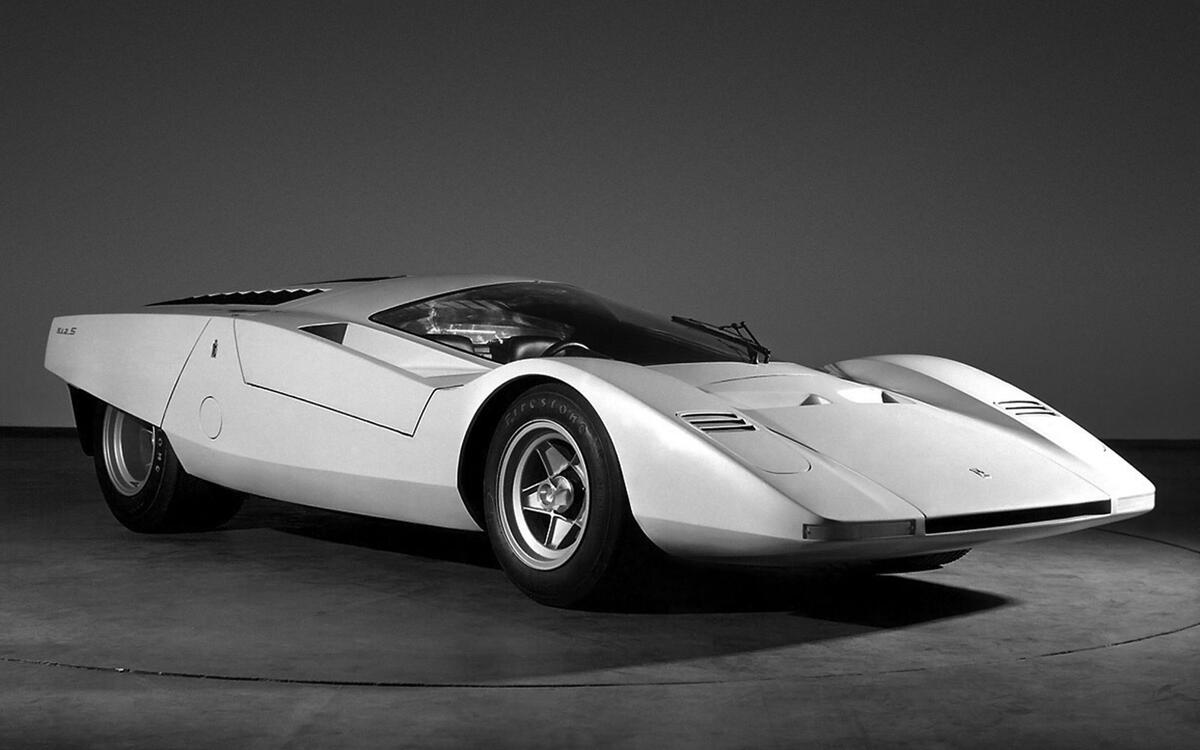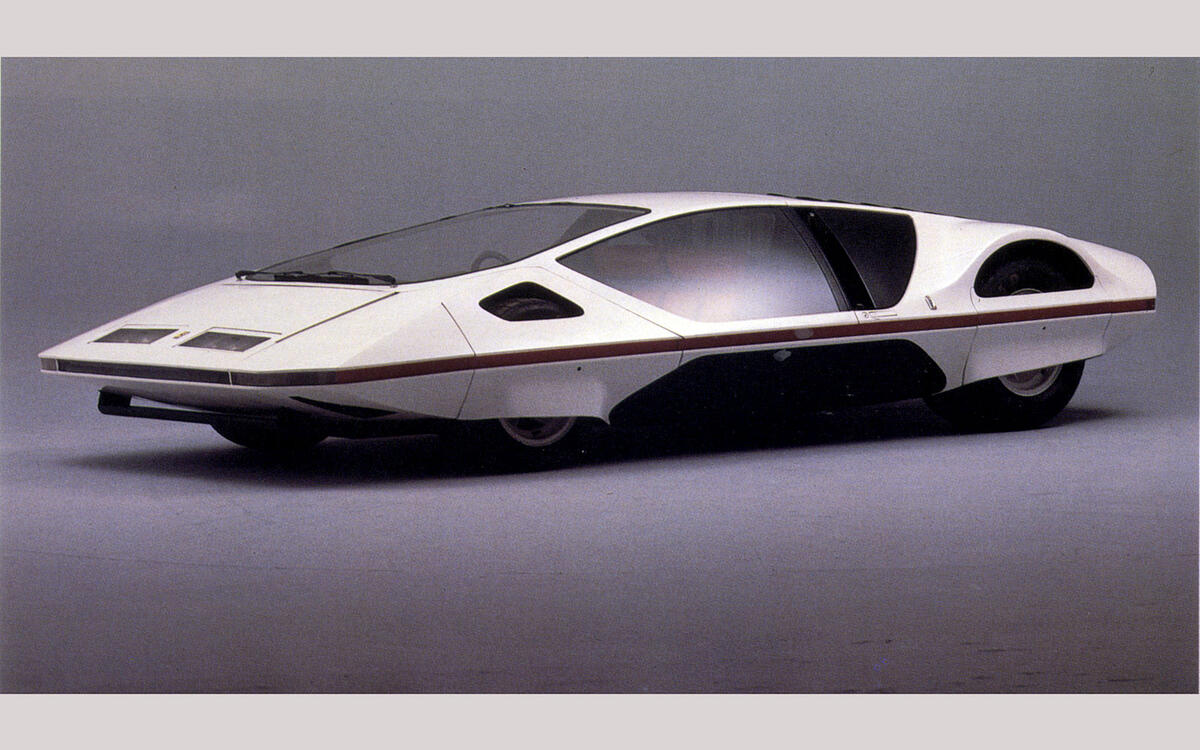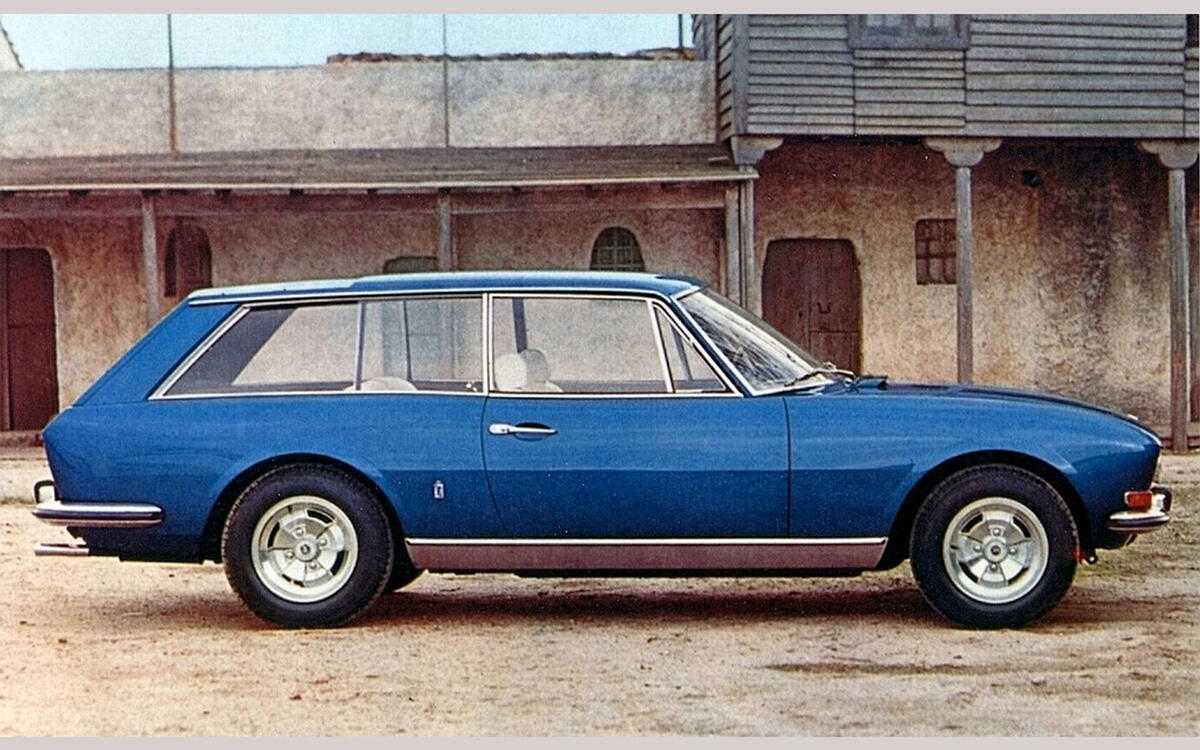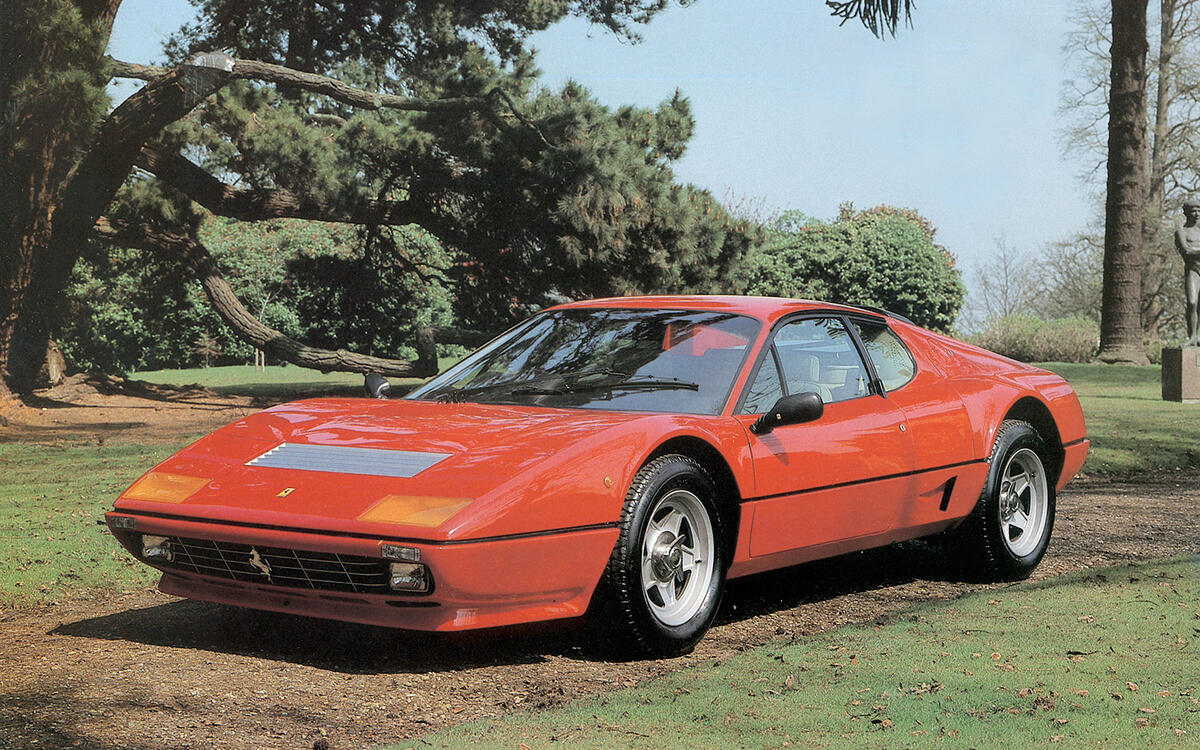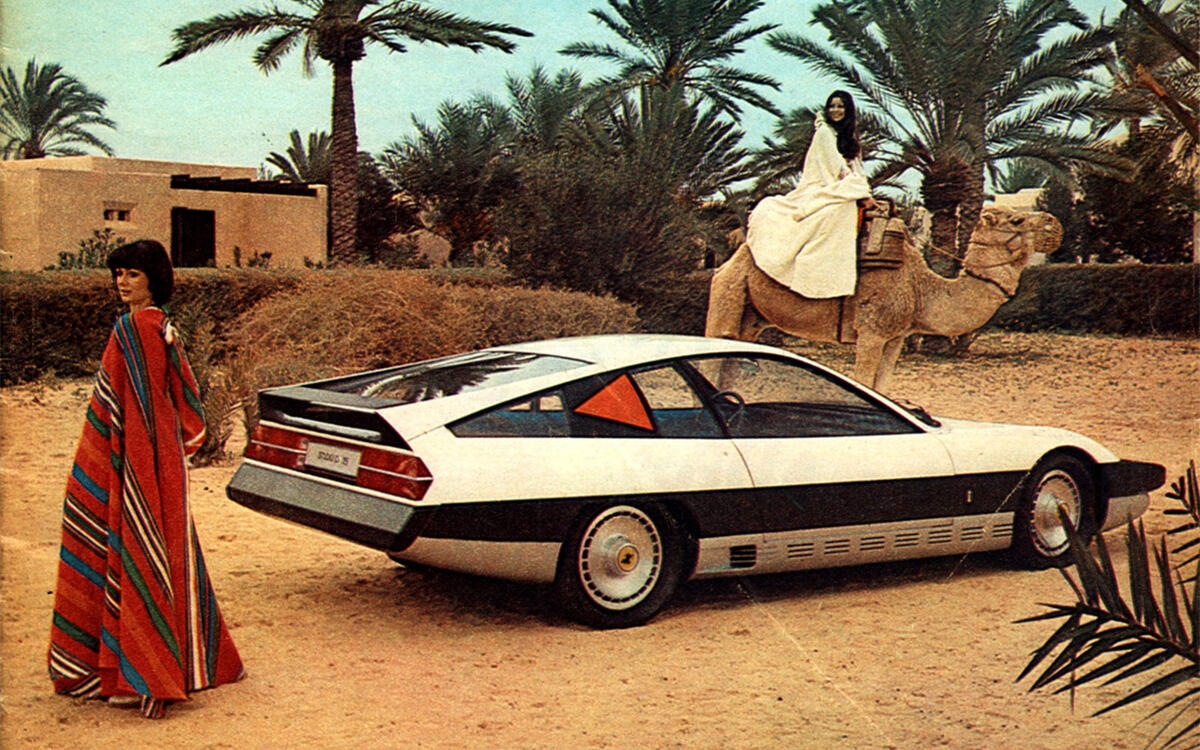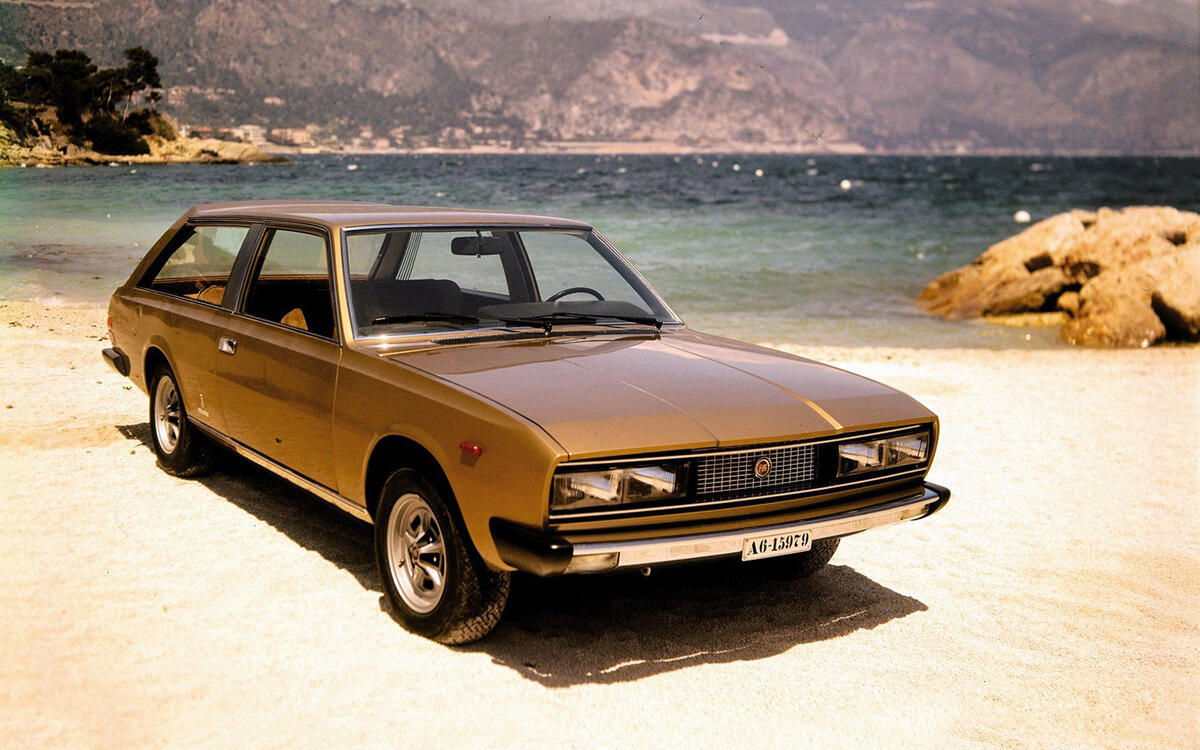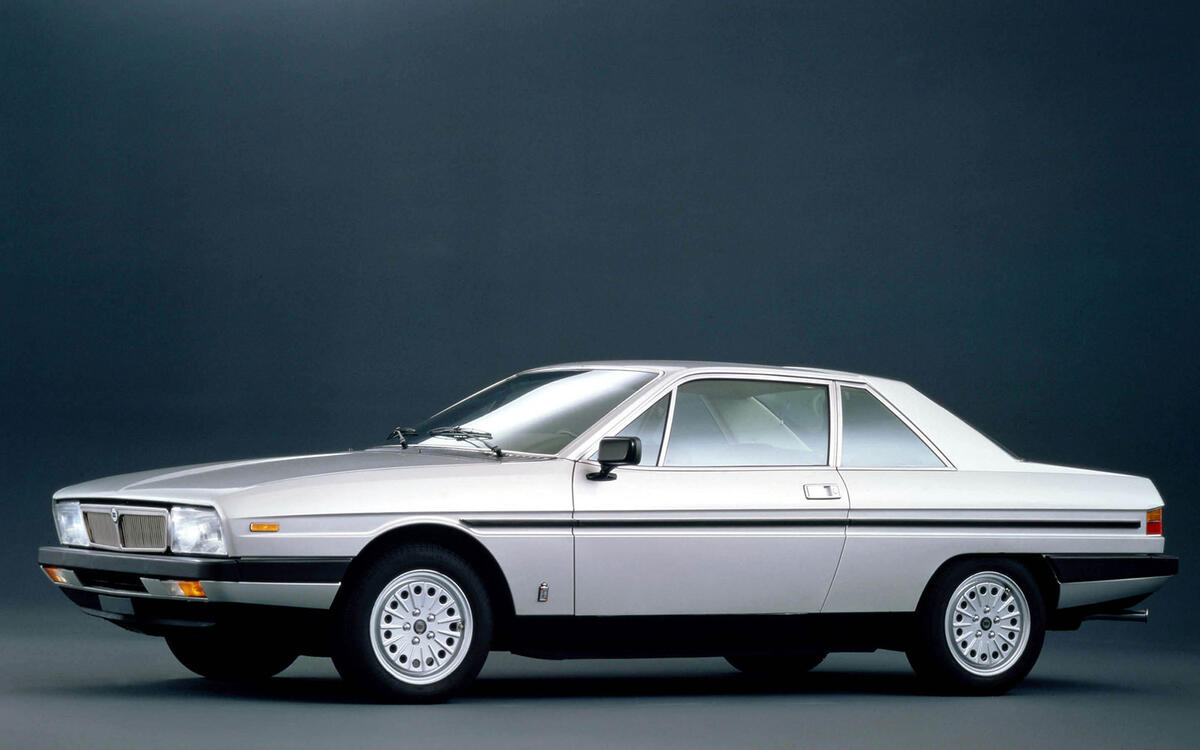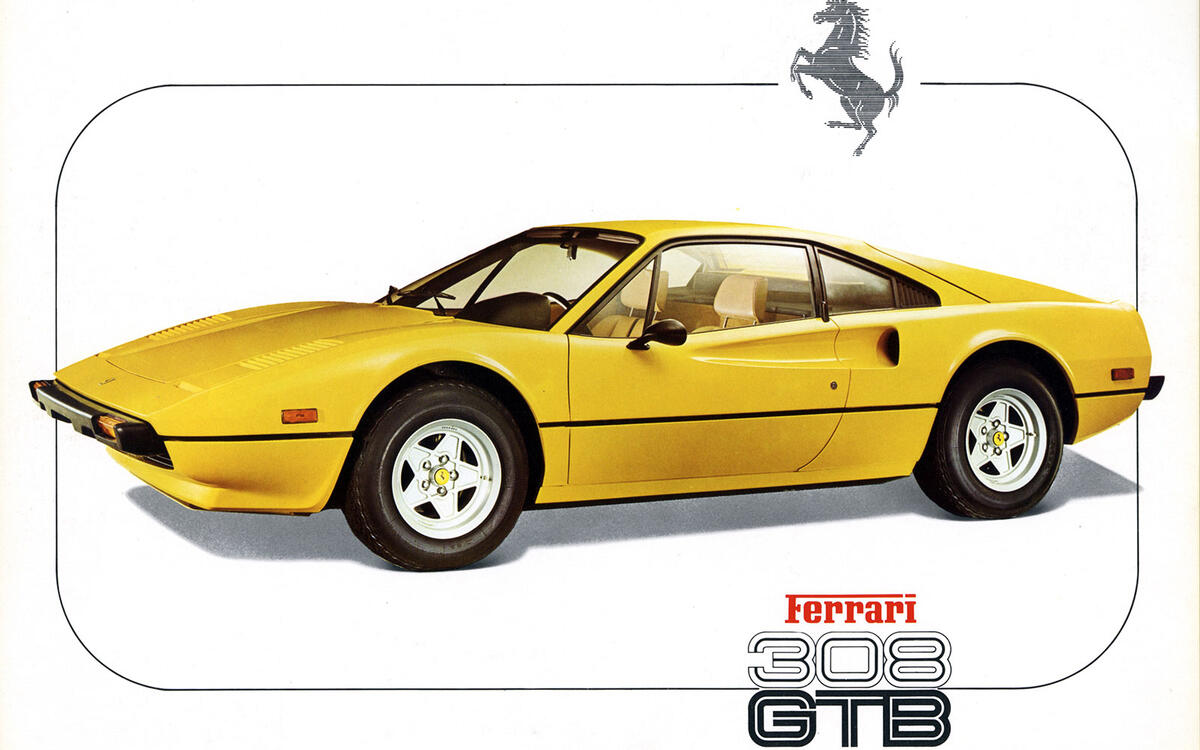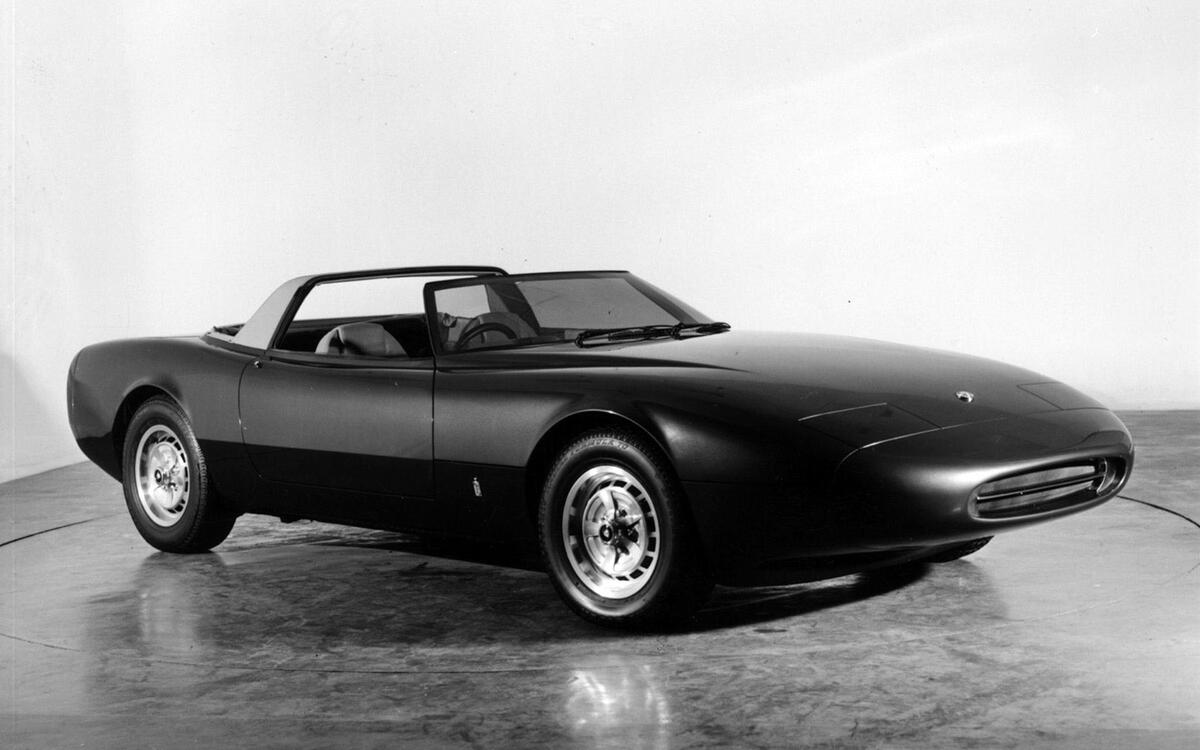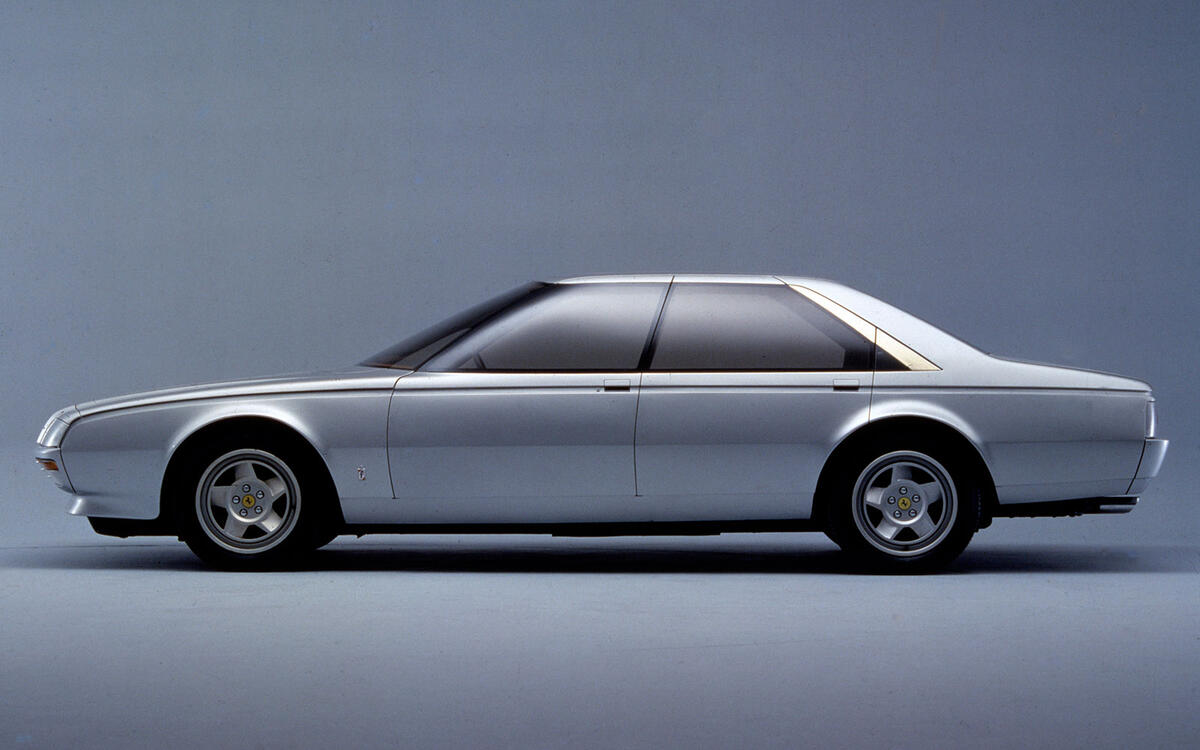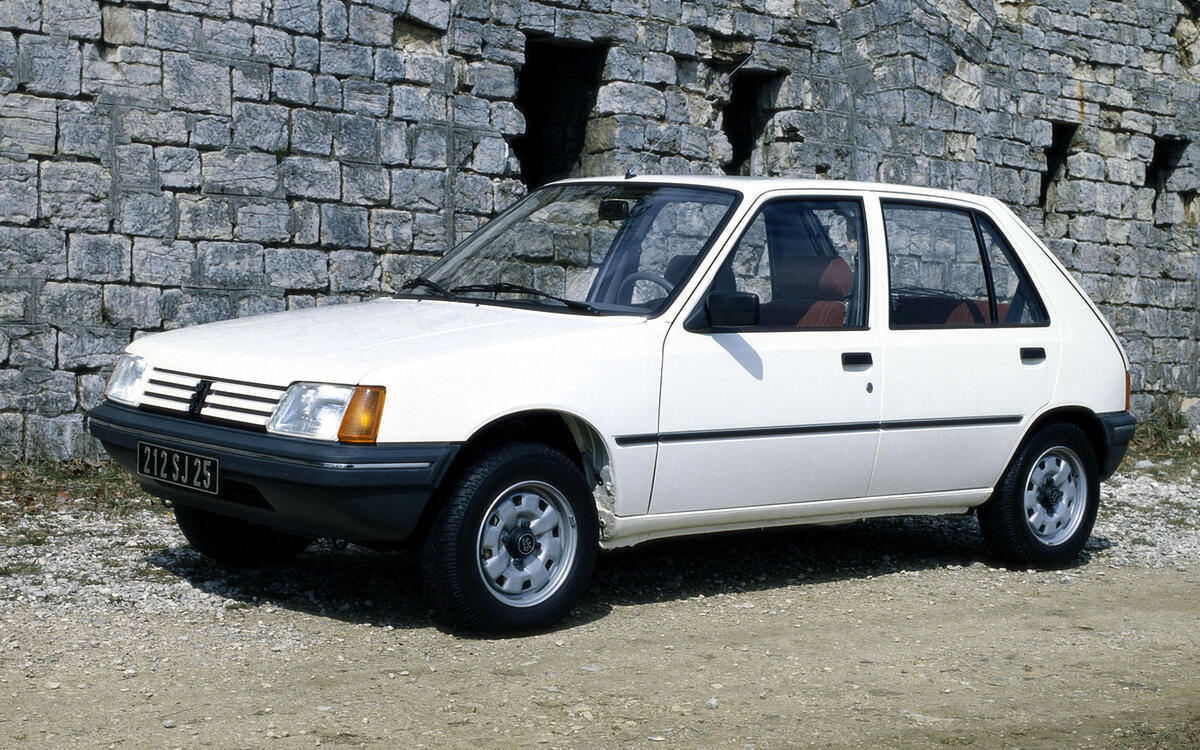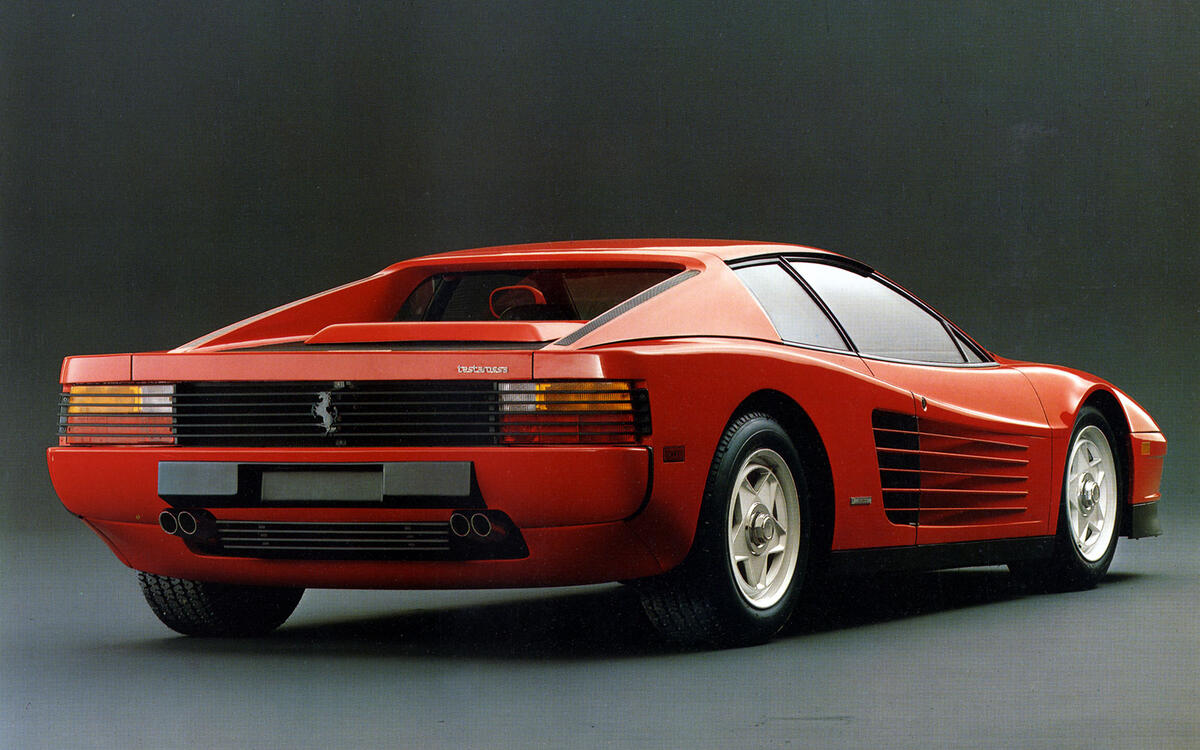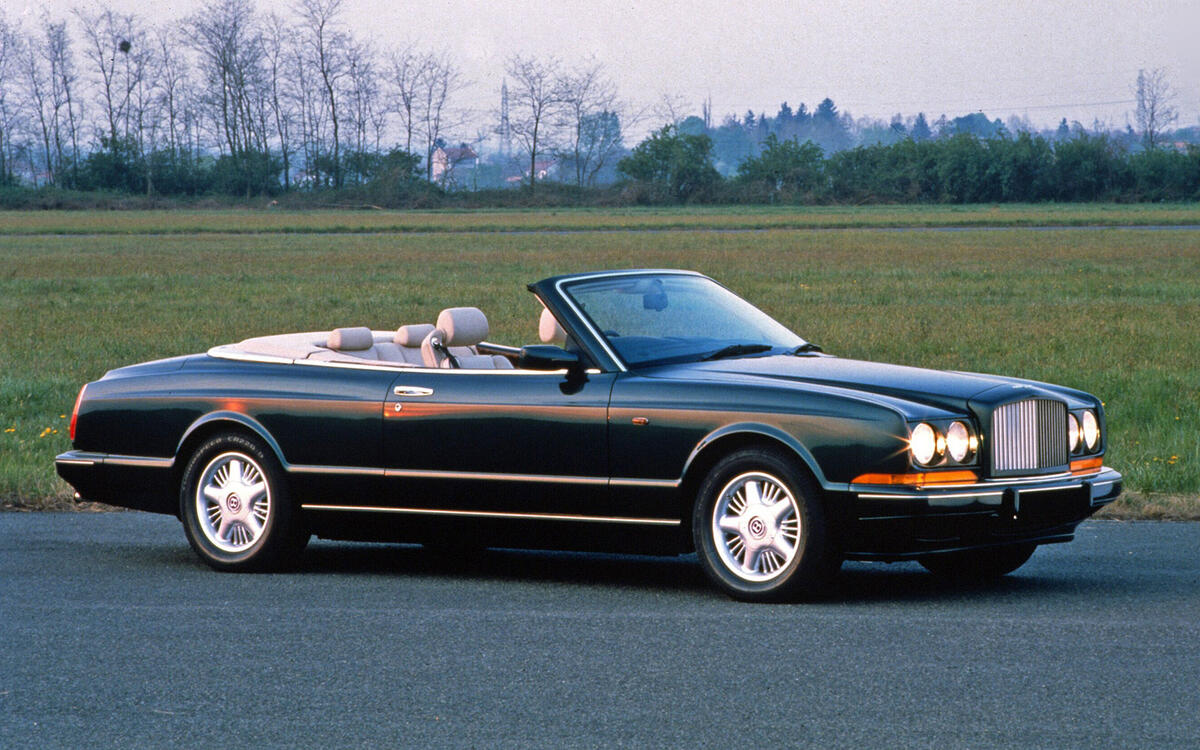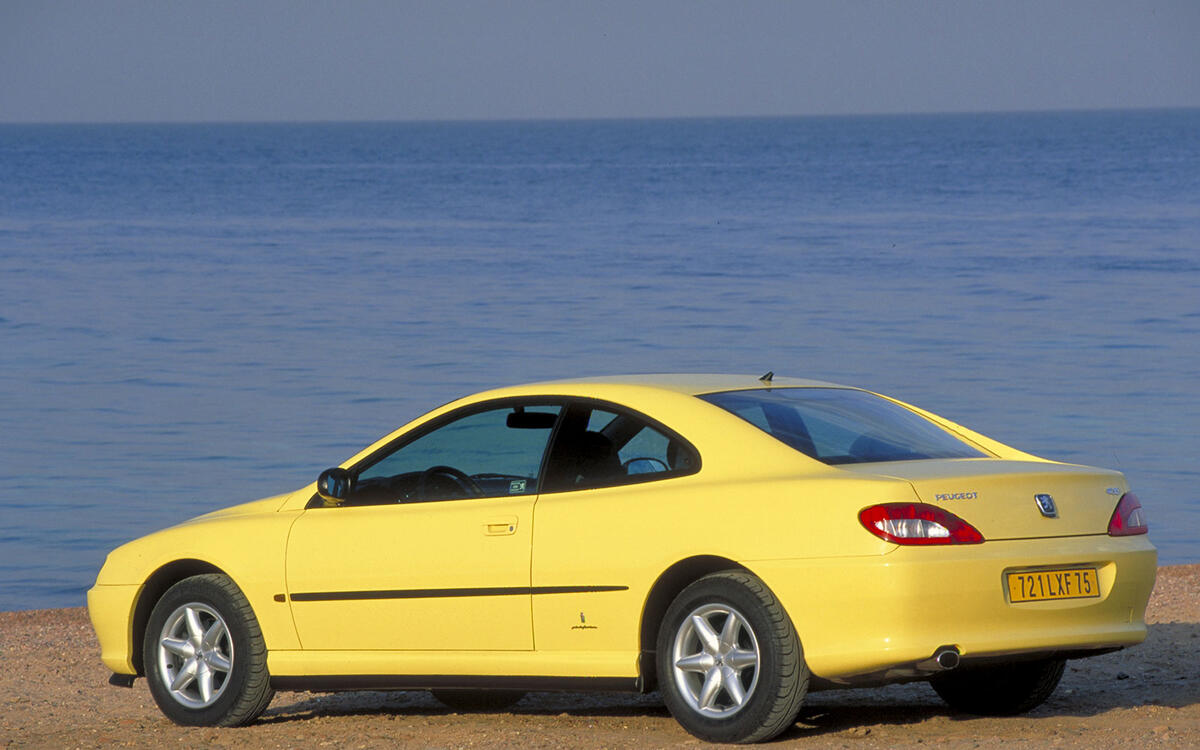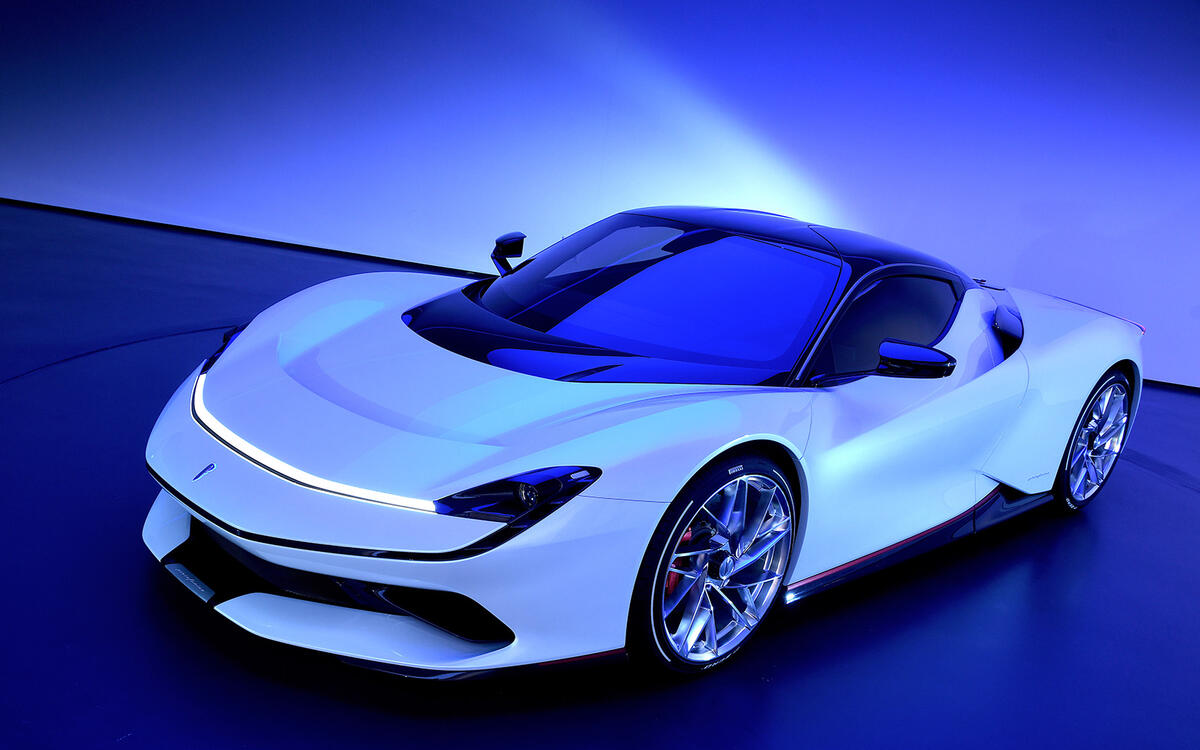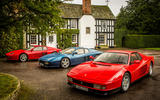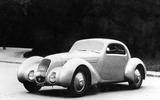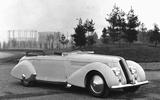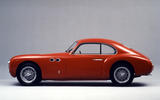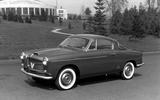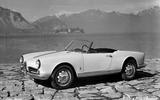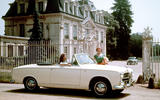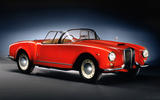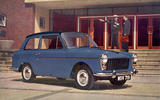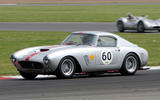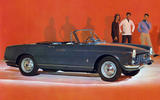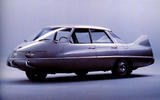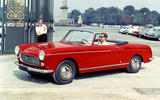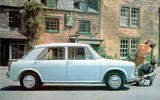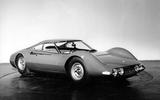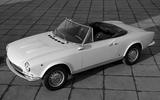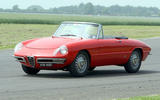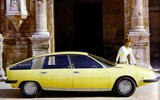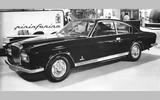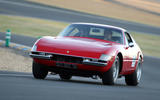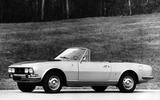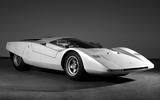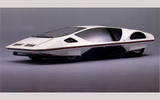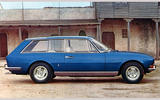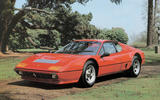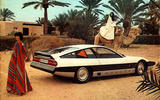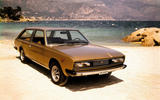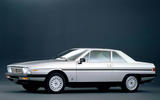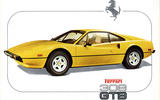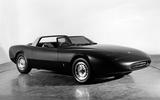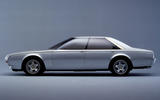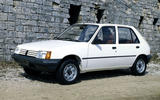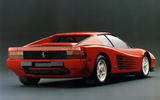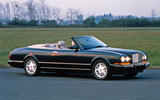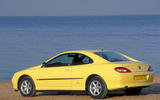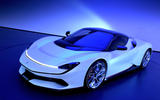 Slide of
Slide of
From the Alfa Romeo Spider to the Peugeot 205 and Ferrari Testarossa, the portfolio of Carrozzeria Pininfarina is undoubtedly one of the finest of any design house around the world.
The Turin-based consultancy is best known for its work with Italian car makers, penning some of the most beloved models from Alfa Romeo, Lancia and Ferrari, but it has worked with plenty more beloved marques from around the world too.
Here we cover some of Pininfarina's most influential cars, starting with its efforts pre-World War Two and running all the way through to its first car developed in-house.
 Slide of
Slide of
Alfa Romeo 6C Pescara: 1935
Based on an Alfa Romeo 6C 2300, the Pescara was a one-off built for Count Theo Rossi of Montelara. Presented at that year’s Milan motor show, the Pescara was incredibly aerodynamic compared with its contemporaries.
 Slide of
Slide of
Lancia Astura: 1936
Just six examples of this luxurious roadster were built, each powered by an 82bhp 2972cc V8 and featuring one of the earliest examples of a powered roof.
 Slide of
Slide of
Cisitalia 202: 1947
Cisitalia started building racing cars in 1946 and just a year later its first road car was unveiled. At a time when many new-car designs still followed pre-war principles the two-seater Cisitalia 202 was revolutionary. Sleek and aerodynamic, 170 were made between 1947 and 1952.
 Slide of
Slide of
Nash Healey: 1952
More of an intriguing design than a beautiful one, the original Nash Healey arrived in 1951 and was billed as America’s first post-war sports car. It was pretty too, but in 1952 a car restyled by Pininfarina was launched, less attractive than before but with the Nash corporate look.
 Slide of
Slide of
Fiat 1100 TV: 1953
In 1953 Fiat introduced a new 1100 saloon, estate and convertible but turned to Pininfarina for a coupé edition. The Italian coachbuilder obliged with this, based on the 1100 TV (Turismo Veloce), the sporty version of the 1100. Around 780 were built between 1954 and 1956.
 Slide of
Slide of
Alfa Romeo Giulietta Spider: 1955
There was a whole family of Giuliettas including a saloon, coupé and estate but it was only the spider that was designed by Pininfarina. At first power came from a 1290cc twin-cam engine but in 1962 the Giulietta morphed into the Giulia, complete with 1570cc engine.
 Slide of
Slide of
Peugeot 403: 1955
This was the car that kicked off Pininfarina’s relationship with Peugeot – and one that would prove to be very fruitful. More than 1.2 million 403s were sold, including saloon, estate, pick-up and convertible variants.
 Slide of
Slide of
Lancia Aurelia B24 Spyder: 1955
The original Aurelia B24 Spider featured a panoramic windscreen, quarter bumpers and no quarterlights – just 240 examples were built between 1954 and 1955. In 1956 a second series was introduced and while it was the same car the lovely details were dispensed with, spoiling the car’s design.
 Slide of
Slide of
Austin A40: 1958
Although Pininfarina is best known for its work with continental brands, it has also worked with British marques too. In 1958 it unveiled this sharply styled saloon and hatchback; it looks dumpy now but it was cutting-edge back then.
 Slide of
Slide of
Ferrari 250 GT SWB: 1959
A whole raft of 250 models was produced, one of which was the very pretty 250 GT that came in coupé or cabriolet flavours. To make the car more agile and hence more competitive in racing, a short-wheelbase version was produced; 176 were made, some with alloy bodies and some with steel.
 Slide of
Slide of
Fiat 1500 cabriolet: 1959
The Fiat 1500 was a distinctive if rather unexceptional car, powered by overhead-valve engines and built between 1961 and 1967. But once Pininfarina had worked its magic to come up with a coupé and cabriolet, the 1500 looked a whole lot more desirable.
 Slide of
Slide of
X: 1960
One of the most bonkers concept cars ever, the X may have looked ugly but as a study in aerodynamics it hit the spot with its drag coefficient of just 0.23.
To help achieve this the lines were flush and the wheels were arranged in a diamond formation; power came from a Fiat 1089cc engine mounted in the rear and driving the single rear wheel.
 Slide of
Slide of
Peugeot 404: 1961
Pininfarina was a bit naughty with this one as it appeared to sell the design for the 404 before selling the same design to BMC which then put it into production wearing Austin Cambridge, Morris Oxford and various other badges.
What BMC didn’t do was market coupé, cabriolet or pick-up editions – but Peugeot did.
 Slide of
Slide of
BMC ADO16: 1962
As well as the Morris Oxford and Austin Cambridge, Pininfarina styled the 1800 ‘Landcrab’ for BMC. Its biggest hit though was the 1100 and 1300 which was one of Britain’s biggest-selling cars of the 1960s. It was available in Austin, MG, Riley, Morris, Wolseley and Vanden Plas forms.
 Slide of
Slide of
Dino Berlinetta Speciale: 1965
Presented at the Paris motor show, this concept incorporated the key styling cues that would be evident on every Pininfarina-designed Ferrari for the next three decades.
 Slide of
Slide of
Fiat 124 Sport Spider: 1966
Launched in 1966 and produced right the way through to 1985, by which point it had been renamed Spidereuropa, the 124 Sport Spider was a massive success for Pininfarina. More than 200,000 were made, many of which were exported to the US.
 Slide of
Slide of
Alfa Romeo Spider: 1966
The Spider remained in production right the way up to 1993, by which time its design had been overhauled numerous times. None of them could improve on the original boat-tailed ‘Duetto’ though.
 Slide of
Slide of
1800 Berlina Aerodinamica: 1967
Half a century after it was unveiled the Aerodinamica still looks sleek if rather passé, but it was hugely influential at the time. The Rover SD1, Citroen GS and CX along with the Alfa Romeo Alfasud and Lancia Beta saloon all took their styling lead from this landmark design.
 Slide of
Slide of
Bentley T1: 1968
Pininfarina built this car for industrialist James Hanson and showed it at the 1968 Paris motor show, in the hope of securing a contract from Rolls-Royce to produce a luxury coupé for the Crewe company. Rolls-Royce wasn’t interested at that point but Pininfarina did produce a Silver Shadow-based coupé just a few years later, with the Camargue.
 Slide of
Slide of
Ferrari Daytona: 1968
Officially sold as the 365 GTB/4 in coupé form and 365 GTS/4 as a cabriolet, the Daytona had its 4.4-litre V12 in the nose at a time when supercars were starting to adopt a mid-engined layout. With a claimed 352bhp on tap the Daytona could manage 174mph.
 Slide of
Slide of
Peugeot 504: 1968
Pininfarina’s Aldo Brovarone did a sterling job with the Peugeot 504 saloon and estate, but where the styling house really scored a bull’s eye was with the coupé and cabriolet which were much more elegant. They arrived a year after the regular models and survived right way through to 1983.
 Slide of
Slide of
Ferrari 512 S: 1969
One of the most exciting concept cars ever created, the 512 S had one of the wedgiest profiles of any design study ever devised. A non-runner introduced at the 1969 Turin salon, the 512 S featured the 6.0-litre V12 cylinder block from a Can-Am racer – but without any internals.
 Slide of
Slide of
Modulo: 1970
From the days when concept cars used to be utterly bonkers came this – a design that didn’t even give a nod to the real world. Based on the chassis of a 1968 Can-Am racer, the Modulo featured a 550bhp 5.0-litre V12 and was claimed to be capable of 220mph. Which would have been pretty scary.
 Slide of
Slide of
Peugeot 504 Riviera: 1971
The Peugeot 504 gets its own entry here but this still-born shooting brake variation on the theme deserves some recognition. Shown at the 1971 Geneva salon, the 504 coupé-based Riviera was a one-off which is rumoured to survive in the hands of a Spanish collector.
 Slide of
Slide of
Ferrari Berlinetta Boxer: 1971
Although the Berlinetta Boxer was first shown in 4.4-litre BB 365 form at the 1971 Turin motor show it would be another two years before the first production cars were delivered. A hike in displacement to 4.9 litres saw the car rebranded BB 512 in 1976; the addition of injection in 1981 turned it into the BB 512i.
 Slide of
Slide of
CR 25: 1974
Making its debut at the 1974 Turin salon, the CR 25 was a study in aerodynamics. With a drag coefficient of just 0.256, the CR 25 featured airbrakes behind the windows and a front bumper that doubled as a spoiler. Power came (theoretically) from the Boxer, although the CR 25 was a non-runner.
 Slide of
Slide of
Fiat 130 Maremma: 1974
The regular Fiat 130 coupé was a Pininfarina design but so too was this unique shooting brake. Like the 504 Riviera the Maremma is worthy of its own entry because it’s another one of those design studies that should have gone into production. But Fiat wasn’t interested and just three were made. If Fiat didn't want it its boss did - Gianni Agnelli loved driving it.
 Slide of
Slide of
Lancia Gamma coupé: 1976
Offered as a rather dumpy-looking saloon with a hatchback silhouette, the Gamma also came as a much more appealing coupé – both were designed by Pininfarina. Hideously unreliable, the Gamma’s favourite trick was to snap its cam belt and lunch the engine if the steering was turned to full lock.
 Slide of
Slide of
Ferrari 308 GTB: 1975
One of the most classically beautiful sports cars ever created, the 308 GTB and its targa-topped sibling the GTS were also offered in 2.0-litre turbocharged form for the home market, where it was sold as the 208. The first cars were made of glassfibre but production switched to steel in 1977. Pininfarina tidied up the 308 in 1985, when it became the 328.
 Slide of
Slide of
XJ Spider: 1978
If only the Jaguar XJS had looked like this it wouldn’t have spent the first four decades of its existence out in the wilderness. Inspired by the curves of the E-Type, the XJ Spider made its debut at the 1978 Birmingham NEC motor show, powered by a 5343cc V12.
 Slide of
Slide of
Pinin: 1980
Designed and built to celebrate Pininfarina’s 50th birthday, the Pinin was based on a Ferrari 400 GT floorpan but it was a non-runner. The car was sold into private hands and was then sold on to a new owner who turned the car into a runner, complete with 400 GT engine and gearbox.
 Slide of
Slide of
Peugeot 205: 1983
It’s more than three decades since the Peugeot 205 was launched yet it still looks fresh and interesting. Perhaps the best-looking supermini ever made, the 205 was produced between 1983 and 1998, with more than 5 million examples sold.
 Slide of
Slide of
Ferrari Testarossa: 1984
After the lithe Boxer, the Testarossa was a slap round the chops. Far more aggressively styled, those side strakes fed air to the hungry 4.9-litre flat-12 behind the cabin. A facelift in 1991 saw the Testarossa morph into the 512 TR; the last hurrah came in 1994 with the arrival of the F512 M.
 Slide of
Slide of
Bentley Azure: 1995
If you had ludicrous amounts of cash to spend on a luxurious four-seater in the mid-1990s, there were few more stylish – or obvious – ways to do it than by buying an Azure. It was Pininfarina’s job to turn the Continental R into a convertible and we’d say it did a pretty good job.
 Slide of
Slide of
Peugeot 406 coupé: 1997
Even now the Peugeot 406 saloon and estate look modern but it’s the coupé that will always be the most collectible. This two-door variant proved popular in the UK and it’s a success that the much less attractive 407 coupé could never emulate.
 Slide of
Slide of
Pininfarina Battista: 2019
The Pininfarina Battista, an all-electric hypercar, mostly shares its powertrain with that of Croatia's Rimac Nevera and has a claimed 1876bhp. The EV will suposedly complete the 0-62 sprint in sub two seconds and will go on to nearly 220mph, have a 280-mile single-charge range, and will be the most-powerful road car ever produced in Italy.
You'll need a cool US$2 million to buy one, however. But it sure is a looker - exactly as it should be...
We look at the sexiest, most stylish and desirable cars ever penned by the Italian design house
Advertisement

